#ozu satoshi
Explore tagged Tumblr posts
Text
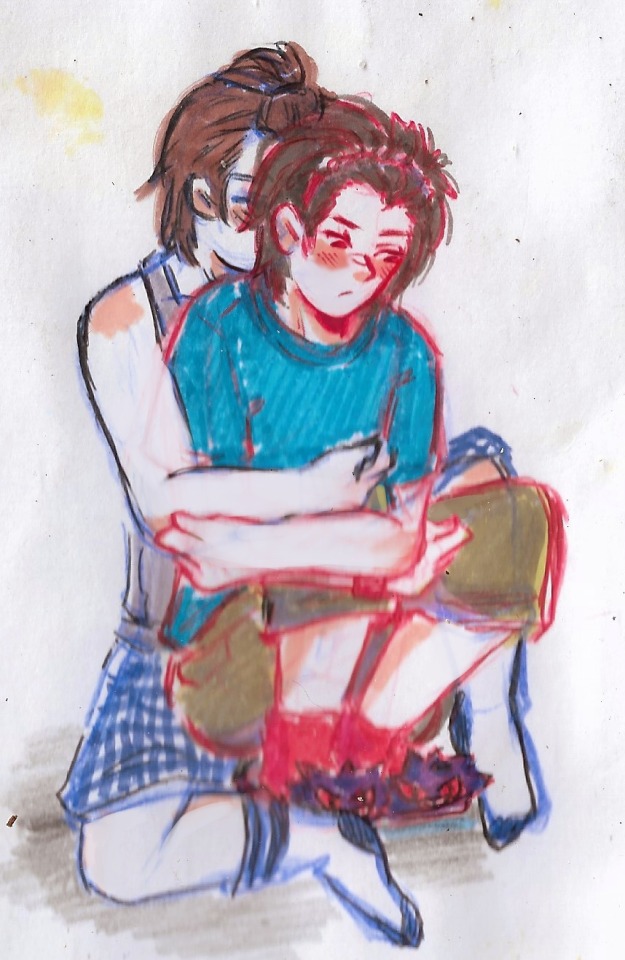
Guys Gays(?
#lennya was here#lennya draws#traditional art#quick doodle#simple coloring#pen sketch#clone baby#ozu satoshi#okabe jotaro#ozukajo#slash ship
2 notes
·
View notes
Text
Japanuary: Introduction

Well, holy shit, what year is it? It's been 4 years since I tried this whole Tumblr thing, and...eh, it wasn't the most successful endeavor ever, but fuck it! It was a fun ride in 2021! I tried to do the whole one-film-per-day thing, stuck with it for a while, and eventually failed that challenge. And I'm not gonna pretend that watching a movie a day and writing a blog post about it is possible with my current schedule, BUT! Even then, I have enjoyed the whole endeavor. So, why not give this shindig another spin? And how do I plan to do that? Easy: with a monthly themed challenge once again.
This time, though, let's not do Action in January. In fact, why be bound to genre at all this time? Theme, sure, but let's stretch the genre limit a bit here. So, with that, let's start a brand new month and a brand new year with a brand new theme...and a very-little touched country on this blog: 日本国.

Japan, sometimes known as the Sun's Origin (a direct translation of the country's name; "the Land of the Rising Sun" is a Western epithet), is one of the biggest movie-producing countries on the planet, since almost the beginning of cinema. However, the Golden Age of Japanese cinema began in the 1940s and 1950s, when prominent directors rose in the fallout of World War II. Pun...technically not intended, but valid all the same. Storytelling and tradition are treasured practices in Japanese culture, which is strong to this day. However, years of self-imposed isolation, followed by rapid acceptance of Western influence, definitely made film an interesting development in those storytelling traditions. While originally Western-influenced, Japan definitely injected itself into 35mm camera tape starting in the 1910s. And that continued, often through propaganda film, until...uh...well...

If you know, you unfortunately know, if terms of the above GIF. But, yeah, World War II happened, and Japan was involved and affected in...various ways. In any case, its civilian population was heavily traumatized, and that showed itself through the film industry especially. While wartime film really was a lot of propaganda about the Empire of Japan, it also came with a lot of restrictions, especially when Western influence was suspected. So, after the war ended with Japan surrendering, and the heavy boot of America made itself known in Japanese everyday life, the film industry was affected positively and negatively. On one hand, much of Japan's film history was literally burned for fear of its potentially offensive nature. Plus, jidaigeki, or samurai films, became incredibly difficult to make. Not impossible, but that's a point for later.
It's during this time that a number of prominent Japanese directors start popping up, or coming back into significance. Of note are Akira Kurosawa (MUCH more on him soon) and Yasujirō Ozu, amongst several others. Film stars like Toshiro Mifune also begin to appear. Japanese films also began their international spread, and suddenly, they also began to become popular in the United States and the Western world. By the time the 1950s came, Japan's film industry had entered its new, golden age, and that decade saw some of the most famous films in the country's history.

I've previously talked about Akira Kurosawa's Rashomon, which came out in 1950, but that's just the tip of the iceberg. Seven Samurai, Tokyo Story, Ikuru, The Burmese Harp, The Human Condition, Ugetsu Monogatari (which I've also talked about), Sansho the Bailiff, Floating Weeds, amongst several others. All in the 1950s. Badass. I feel like there's a major one I'm missing, too, but I can't list every Japanese film ever made. You get the idea: Japanese film is sort of a big deal.
Despite this, though, when television spread throughout the succeeding decades, the film industry died back a tiny bit. CHina began their own blockbuster film industry with the boom of wuxia, and Japanese filmmakers became more experimental in their work, appealing less to the masses as a result. The two studio giants in Japan, then and now, were Toho Co., Ltd. and Toei Company, Ltd. Even then, neither company did great during the 60s and 70s. Toei would eventually find its footing in the world of anime, while Toho found its footing in...OH RIGHT

Sorry, Godzilla, almost forgot about you. This science-fiction horror (and yes, it is a horror film in an existential sense) would put an indelible stamp on the industry for DECADES, and would also color people's perception of Japanese films in the west for a while. That, combined with the resurgance in jidaigeki, would prove a bit of a downfall in terms of Western popularity. But even then, the film industry kept chugging along, and Japan did eventually find a new way to appeal to the Western world. Now, I'm skipping over a HELL of a lot of history (basically the entire '80s and the mini-theatre craze), but there's good reason for that.
See, once we get to the '80s and '90s, new directors suddenly step into the limelight. Takeshi Miike shocks people with Audition, which also becomes part of a new horror tradition in Japanese cinema that gets a LOT of attention. Hirokazu Kore-eda moves from documentaries in the '60s, and makes several films over the years up through the '90s, like Maborosi and After Life. And then, in the late 1980s, a new animated film based on the Lupin the Third franchise brings a new director into the public consciousness...and EVERYBODY starts paying attention again.

Hayao Miyazaki and Studio Ghibli come into prominence, and film is back, baby! And I mean that; Porco Rosso, that one Miyazaki movie with humanoid pigs, was more popular than E.T. the Extra-Terrestrial, for one example. Satoshi Kon and Isao Takahata come into the fray, and large movie theatres also become more prevalent after their decline decades later. And now, Toei is making anime for Japan and the Western world, where it's EXPLODING. Suddenly, Japanese media is popular worldwide, and they never go back. The anime industry exponentially expands, and more films can be made and distributed. Hell, Toei also gets rich from the trend of sentai shows, which the Western world will most closely associate with Power Rangers! Seriously, shit starts to blow up.
Today, most people associate Japanese media with either anime or Godzilla, which is...simplistic. But, hey, there's a FUCKTON of Japanese media out there, and I've personally explored precious little of it. So when I was settling on watching more films this coming year, I was looking for ideas. And then I stumbled on one: Japanuary. Not an original idea on my part, and you can check out other lists for it (like this one, this one, and this one, for starters), but I'm into it! Of course...there is one caveat.

I, uh...I didn't watch all of these in January. I actually started in November.
NOVEMBER WAS A DIFFICULT MONTH!!! And not even for all the reasons you'd expect. But, honestly, I missed updating this blog. And I knew that, to do so in a timely fashion, I'd need a lot of extra time. So, to get that extra time, I started real early. And in truth, I'm writing this post from the past (specifically November 8. YES IT HAS ALREADY BEEN A DIFFICULT MONTH). Still, I'll be putting out the full list of films I'll talk about this month in this post! And, if this came out on December 30th as planned, that means I actually did it! Otherwise, this post would be left in the drafts, to die a slow and unfulfilled death. So, fingers crossed that you're reading this right now!
And so, with that said, here is my list for Japanuary 2025! Feel free to watch along if you can (so will I, believe me), and happy New Year!
Ikiru (1952; dir. Akira Kurosawa)
Throne of Blood (1957; dir. Akira Kurosawa)
Yojimbo (1961; dir. Akira Kurosawa)
High and Low (1963; dir. Akira Kurosawa)
Ran (1985; dir. Akira Kurosawa)
Late Spring (1949; dir. Yasuijirō Ozu)
Tokyo Story (1953; dir. Yasuijirō Ozu)
The 47 Ronin (1941; dir. Kenji Mizoguchi)
Sansho the Bailiff (1954; dir. Kenji Mizoguchi)
Harakiri (1962; dir. Masaki Kobayashi)
The Ballad of Narayama (1983; dir. Shōhei Imamura)
Fireworks (1997; dir. Takeshi Kitano)
Audition (1999; dir. Takeshi Miike)
Sukiyaki Western Django (2007; dir. Takashi Miike)
Nausicaa of the Valley of the Wind (1984; dir. Hayao Miyazaki)
Castle in the Sky (1986; dir. Hayao Miyazaki)
Porco Rosso (1992; dir. Hayao Miyazaki)
The Secret World of Arrietty (2010; dir. Hayao Miyazaki)
The Boy and the Heron (2023; dir. Hayao Miyazaki)
Perfect Blue (1997; dir. Satoshi Kon)
Tokyo Godfathers (2003; dir. Satoshi Kon)
Wolf Children (2012; dir. Mamoru Hosoda)
Mirai (2018; dir. Mamoru Hosoda)
Nobody Knows (2004; dir. Hirokazu Kore-eda)
Shoplifters (2018; dir. Hirokazy Kore-eda)
Godzilla (1954; dir. Ishirō Honda)
Godzilla Minus One (2023; dir. Takashi Yamazaki)
Tampopo (1985; dir. Jūzō Itami)
Mishima: A Life in Four Chapters (1985; dir. Paul Schrader)
Drive My Car (2021; dir. Ryūsuke Hamaguchi)
Tokyo Gore Police (2008; dir. Yoshihiro Nishimura)
#user365#365 days 365 movies#365 movie challenge#365 movies 365 days#365 movies a year#365days365movies#movie challenge#japanuary#japanese film#japanese movie#japanese cinema#monthly movie challenge#challenge month#japan#akira kurosawa#ishiro honda#mamoru hosoda#hayao miyazaki#satoshi kon#yasujiro ozu#kenji mizoguchi#takeshi miike
16 notes
·
View notes
Text
My top ten and bottom ten new watches of the month.


#david lynch#lost highway#the two towers#the return of the king#lord of the rings#lotr#peter jackson#mysterious skin#gregg araki#akira kurosawa#Madadayo#One wonderful Sunday#letterboxd#yasujiro ozu#satoshi kon#darren aronofsky
4 notes
·
View notes
Text

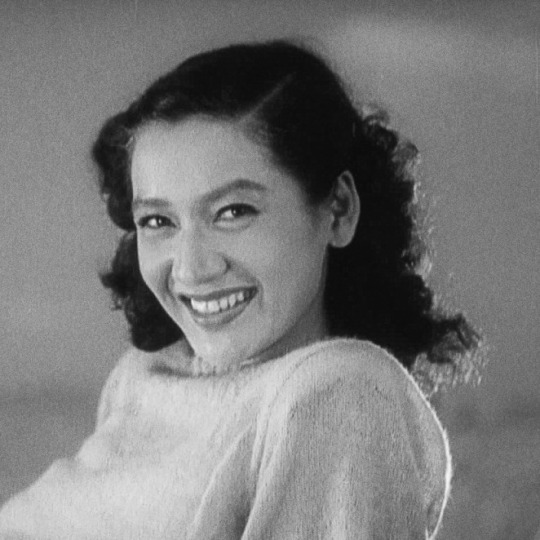
Propaganda
Yvonne De Carlo (Frontier Gal, The Ten Commandments, Casbah)— Although most famous for playing Lily Munster in The Munsters, Yvonne De Carlo had a successful movie career throughout the 1940s and 1950s, appearing in such films as “The Ten Commandments”, “Sea Devils” and two Munster movies later in life.
Setsuko Hara (Tokyo Story, Late Spring, The Idiot)— "'The only time I saw Susan Sontag cry,' a writer once told me, his voice hushed, 'was at a screening of a Setsuko film.' What Setsuko had wasn’t glamour—she was just too sensible for that—it was glow, one that ebbed away and left you concerned, involved. You got the sense that this glow, like that of dawn, couldn’t be bought. But her smiles were human and held minute-long acts, ones with important intermissions. When she looked away, she absented herself; you felt that she’d dimmed a fire and clapped a lid on something about to spill. Over the last decade, whenever anyone brought up her lips—'Setsuko’s eternal smile,' critics said, that day we learned that she’d died—I thought instead of the thing she made us feel when she let it fall." - Moeko Fujii
This is round 2 of the tournament. All other polls in this bracket can be found here. Please reblog with further support of your beloved hot sexy vintage woman.
[additional propaganda submitted under the cut]
Yvonne de Carlo:

The woman who brought Burt Lancaster to his knees.
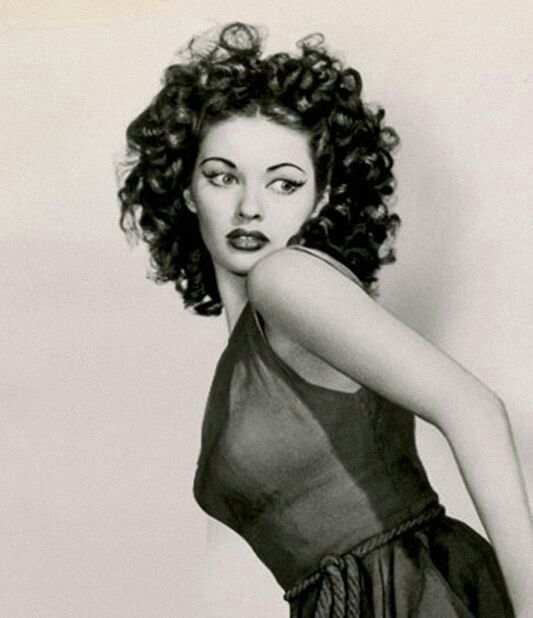
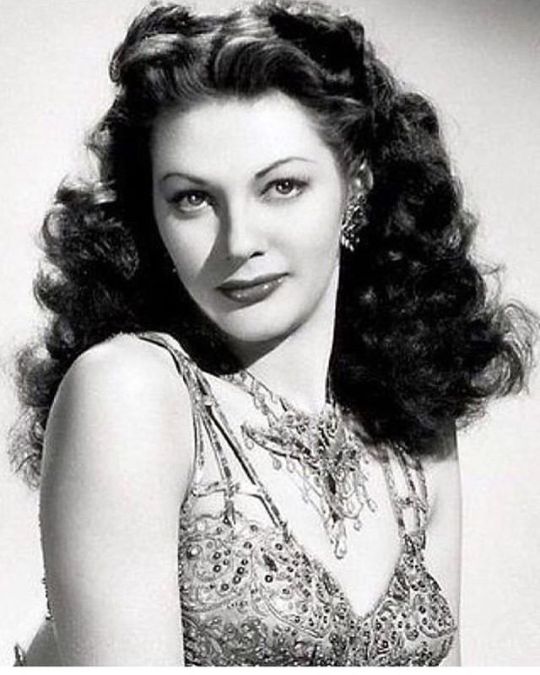
Setsuko Hara:

One of the best Japanese actresses of all time; a symbol of the golden era of Japanese cinema of the 1950s After seeing a Setsuko Hara film, the novelist Shūsaku Endō wrote: "We would sigh or let out a great breath from the depths of our hearts, for what we felt was precisely this: Can it be possible that there is such a woman in this world?"
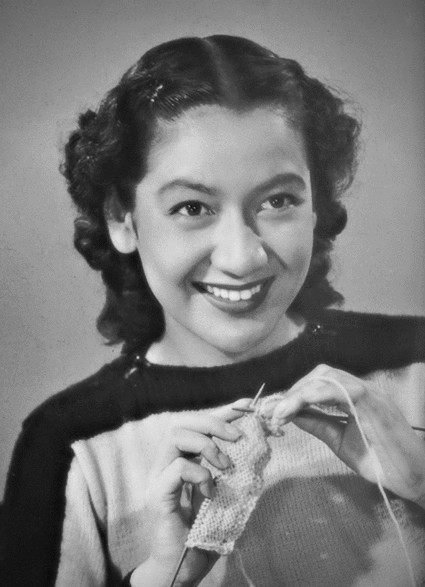
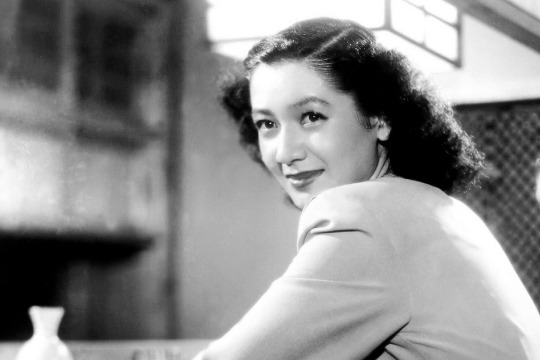
One of the greatest Japanese actresses of all time!! Best known for acting in many of Yasujiro Ozu's films of the 40s and 50s. Also she has a stunning smile and beautiful charm!
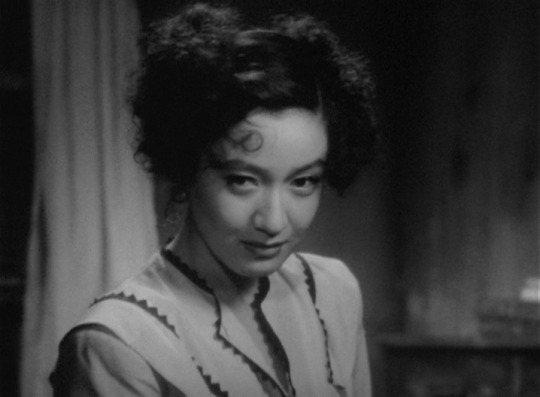
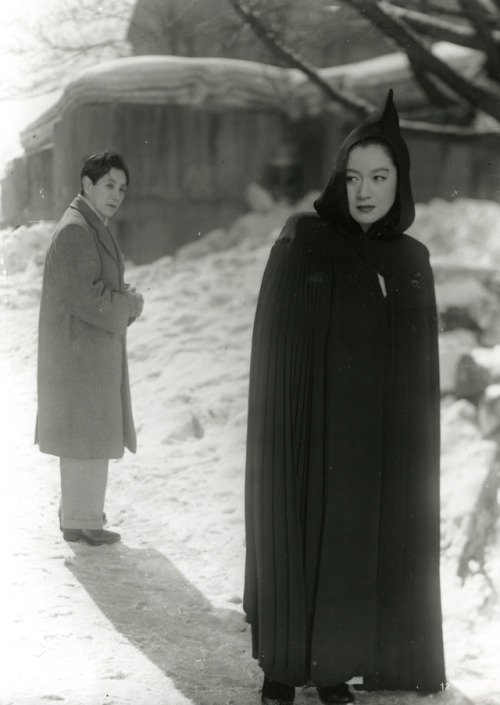

Linked gifset
Linked gifset 2
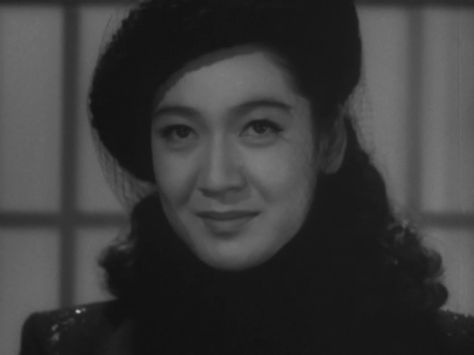
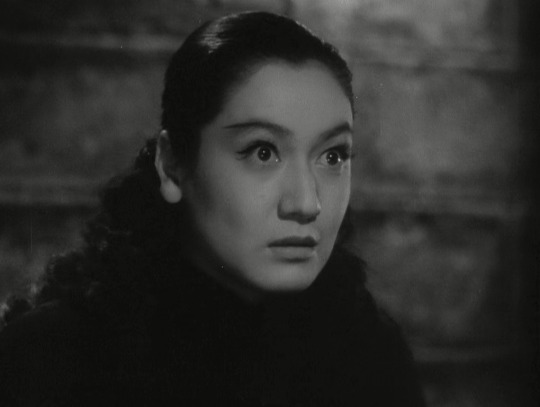

She's considered by some to be the greatest Japanese actress of all time! In Kurosawa's The Idiot she haunts the screen, and TOTALLY steals the show from Mifune every time she appears.

"No other actor has ever mastered the art of the smile to the same extent as Setsuko Hara (1920–2015), a celebrated star and highly regarded idol who was one of the outstanding actors of 40s and 50s Japanese cinema. Her radiant smile floods whole scenes and at times cautiously undermines the expectations made of her in coy, ironic fashion. Yet her smile's impressive range also encompasses its darker shades: Hara's delicate, dignified, melancholy smile with which she responds to disappointments, papers over the emotions churning under the surface, and flanks life's sobering realizations. Her smiles don't just function as a condensed version of her ever-precise, expressive, yet understated acting ability, they also allow the very essence of the films they appear in to shine through for a brief moment, often studies of the everyday, post-war dramas which revolve around the break-up of family structures or the failure of marriages. Her performances tread a fine line between social expectation and personal desire in post-war Japan, as Hara attempts to lay claim to the autonomy of the female characters she plays – frequently with a smile." [link]

Leading lady of classic Japanese cinema with a million dollar smile
Maybe the most iconic Japanese actress ever? She rose to fame making films with Yasujiro Ozu, becoming one of the most well-known and beloved actresses in Japan, working from the 30s through the 60s in over 100 hundred. She is still considered one of the greatest Japanese actresses ever, and in my opinion, just one of the greatest actresses of all time. And she was HOT! Satoshi Kon's film Millennium Actress was largely based on her life and her career.
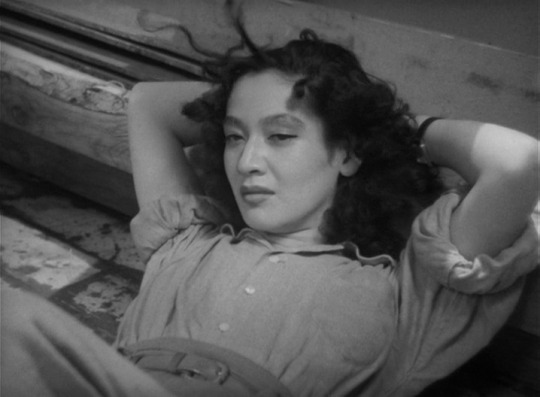
376 notes
·
View notes
Text
Two Flavors of Japanese (BL) Cinema
Recently I came across a post that proposited that Japanese cinema hadn't changed since the 1950's and came in, essentially, two types.
Let's discuss that.
I can’t go into the history of all Japanese cinema in a singular blog post like that’s just not possible, there’s literal books and classes you can take on this subject, and I will be linking further reading down at the bottom of the post so you can do just that.
This fact alone, should already disprove the point that Japanese cinema hasn’t changed since the 1950’s. Other than the fact that like, Japan isn’t a static society that is forever unchanging because human beings do not work like that.
Which is why I’m writing this essay at all.
I love cinema, I love storytelling and filmmaking. And, frankly, I may not be an expert but I am annoying. I own that.
Japanese cinema has held influence over many directors, writers, animators, and so forth.
Just watch this playlist of Sailor Moon references across various cartoons. Or how Satoshi Kon influenced the work of Darren Aronofsky and Christopher Nolan. Or how James Cameron and the Wachowskis were both influenced by Mamoru Oshii’s 1995 Ghost in the Shell. And then there’s Akira Kurosawa who’s been cited as a major influence for directors like: Steven Spielberg, George Lucas, and Martin Scorsese and a slew of others.
I want folks to know there’s a slew of amazing films from Japan and that distilling the industry - the blood, sweat and tears of its creators - to a strict dichotomy of this or that, either/or is disrespectful at best and xenophobic at worst.
It’s also just a shame because, like, guys there’s so many great films from Japan! There’s also probably a lot of great live action shows from Japan but I’m not super knowledgeable about them - I mainly watch anime so that’s not a great metric in terms of Japanese television - so I’m just talking about films in this post.
Ok so main points I’m gonna address:
Japanese Cinema hasn’t changed since the 1950s
Japanese film style falls under an extreme dichotomy of cinematic/sweeping (described as “atmospheric”) or cartoonish/slapstick (described as “live action manga”)
Baby does any of this have to do with BL? (no, but it IS more gay than you think)
With these four films: The Hidden Fortress (1958), Lady Snowblood (1973), Gohatto (1999), and Kubi (2023).
I picked these four because they’re all “period pieces” taking place feudal Japan - or with the aesthetics of feudal Japan, The Hidden Fortress nor Lady Snowblood aren’t based on actual historical events, like Gohatto and Kubi are, however loosely, but take place in an amorphous 15th to 18th century Japan - and I think they strongly show the development of this singular genre in Japanese cinema.
Plus the latter two films, Gohatto and Kubi, are gay as fuck and I know my people.
[you can also read this post on this blog post which includes additional links as tumblr has a limit and for easier readability as this is a long post]
The Hidden Fortress
youtube
Released in 1958, directed by Akira Kurosawa it’s probably the most well-known film on the list. It’s a film that exists within the “Golden Age” of Japanese cinema alongside films like Kurosawa’s own Seven Samurai (1954), Yasujirō Ozu’s Tokyo Story (1953) and Kenji Mizoguchi’s Ugetsu (1953).
It was also the era where, after the American Occupation post-WWII a boom of movie distribution took place with new film studios such as: Toho (y’all know them from any Godzilla movie ever made), Toei (if you know One Piece you know Toei but they’ve done a ton of films both animated and live action) and others.
The story is straight forward, two peasants, Matashichi and Tahei who bicker their asses off like an old married couple the entire film, happen upon a Very Hot Man with the Only Thighs Out (Toshiro Mifune was a BABE) named Rokurota and his companion a icy young woman named Yuki.
Matashichi and Tahei have just escaped like, a ton of ~circumstances that include failing to become samurai, being broke as fuck, getting captured and forced into servitude - don’t worry that lasted like 6 hours tops - and then find gold hidden in a stick on a mountain.
Turns out Rokurota has all the stick gold they could want! So they team up neither realizing Rokurota and Yuki are actually part of a clan that’s been recently wiped out and they’re on the run from a rival clan who has wiped theirs out. Yuki is the princess of said clan and it’s only survivor, while Rokurota is her samurai general and retainer.
Tahei and Matashichi, living in ignorance of these facts, try to steal the gold away from them because they live that hustle life until the end when all is revealed and Yuki grants them both with a gold piece to share (this is a really big piece of stick gold).
There’s other things that happen, like a fight scene between Rokurota and rival clan member, Yuki owning every single scene she in - I fucking love her - but that’s the gist.

The story is, again, pretty uncomplicated, it balances the comedy of Tahei & Matashichi with the stoicism of Rokurota and Yuki well, and all the acting is strong. In terms of its film style, by modern day standards it’s not especially “cinematic” Kurosawa doesn’t favor fanetic camera movements, his camera is often very still and the movement he employs is often in individual character ticks, and/or background set pieces. This film has a lot of great set pieces.
Kurosawa didn’t employ camera techniques like panning, he doesn’t really do extreme close ups, there's no swooping shots or fancy tricks, I’d say a majority of the camera shots in The Hidden Fortress are a combination of mid, and wide, with a few mid-close ups. One thing to notice is Kurosawa’s use of scene cuts; instead of a cut he used pan sweeps to change scenes. If you’ve ever watched a Star Wars film you know exactly what I mean.
The Hidden Fortress, first and foremost, is an action adventure film. It has more in common tonally with Top Gun Maverick or Star Wars A New Hope, in that it's straight forward, sincere, and grand in scale, grounded by a very honest set of characters who are strongly motivated.
I feel like in modern day discussions we association “action/adventure” films in a sorta of negative way; this is probably due, in part, to the oversaturation of the high budget blockbusters of the last ten years - oh MCU, how you’ve fallen - that are overly bombastic, overly complicated, overly connected, and the root of what audiences connect with - the characters - tends to be lost.

Scott Lang's motivations in Ant-Man and the Wasp: Quantumania are to protect his teenager daughter and the family he's built, which are simple, strong, and relatable character motivations. However, they got lost in the conventions of the plot, the frantic energy of the film, the simple amount going on around Scott that his motivations become less a central focus and thus he becomes small within his own film. We, the audience, become distant and it grows more difficult to connect with what's happening. This can still work on some level, the Fast and Furious franchise isn't successful because it's sophisticated, but the Fast-chise has embraced it's cheesier conventions and spectacle, while blockbusters like the MCU's output, simple juggle to much all at once. It also helps that while the cast keeps growing in the Fast and Furious films, there's still less than ten characters you have to actually know and care about. To fully understand and connect with the characters of The Marvels, you have to watch Ms. Marvel and WandaVision on Disney+ and the task becomes more akin to homework than simply the enjoyment of watching a movie.
The epic scale grows so large it feels daunting, rather than exhilarating.
I think this is why a film like Winter Soldier, more so than most MCU films of the last decade, has continued to be a fan favorite of the universe and of blockbuster lovers whether you are a fan of the MCU or not. At its root, Winter Soldier is character driven, with deeply motivated characters, which is what makes the action and adventure aspects stick.
The Hidden Fortress is similarly character driven with a simple and straightforward story that is about honor, loyalty, a princess, a loyal samurai/knight, rebuilding a decimated clan, and two “normal” characters to keep everything grounded and relatable. Which in turn, helps make it timeless. While the filmmaking itself isn't grandiose as what modern audiences may be used to, Kurosawa knows how to direct a scene and more than that, direct his actors. Mifune is commanding as always, but for me, it's really actress Misa Uehara as Princess Yuki that steals the movie.
Lady Snowblood
youtube
Released in 1973 and based on a manga of the same name by Kazou Koike and Kazuo Kaminura, directed by Toshiya Fujita, Lady Snowblood and its sequel Lady Snowblood: Love Song of Vengeance are considered cult classics. Lady Snowblood, famously, is Quentin Tarantino’s inspiration for his Kill Bill saga (like, a freaking lot).
Lady Snowblood is a part of the era of “new wave” and “pink films” that were emerging in Japan and elsewhere. Stateside I think a close equivalent to both the style and content of Lady Snowblood and other films like it are exploitation films. In fact while watching Lady Snowblood I couldn’t help but get exploitation film vibes just off the aesthetics and thematics of the film itself.
To break down Lady Snowblood’s plot it goes like this: Yuki is tasked with getting revenge on four people who had a hand in her father, and older brother’s murder, and her mother’s rape (which is seen on screen so warning for y’all this is def a Does the Dog Die movie).
Yuki’s mother kills one of her rapists, but is imprisoned before she can kill the others and while in prison she purposely gets pregnant so her child can carry on her revenge after she dies. Yuki is born, and raised by one of the fellow inmates and a priest who trains her in martial arts. She’s raised as a “demon”, whose only purpose is revenge for her mother, father, and brother. And boy does she get revenge the film is violent and graphic (even if by modern day standards the blood looks fake as fuck the emotions are there).
Like The Hidden Fortress this film is very character driven, with a highly motivated protagonist but it’s also revels far more in it's violence and the spectacle of that violence. Yuki, in comparison to her earlier counterpart Princess Yuki, is the driver of the action in the story. She's an active participant in the plot, and the story centers around her. Princess Yuki is commendable, she's compassionate, and she makes decisions, but the story is more about what she represents - a fallen princess - than what she does. She's symbolic, the embodiment of a leader, a samurai spirit of nobility who becomes a leader worth following. Yuki, on the other hand, needs no protection from others, she's a much more direct and active part of the story since the story is hers - and her mothers - she's more elegant than regal, and there's nothing necessarily 'noble' about her. She's not seeking to rebuild her clan as a leader, her motivations are singularly about her revenge quest to fulfill her mother's dying wish.
In some ways, they're very similar - Yuki also feels compassion for another woman who's been used by the men around her as Princess Yuki does - and in others they are very different and speak to the changing expectations and idealizations of women from the 1950s to 1970s.
Lady Snowblood is also way more violent than any Kurosawa film I’ve watched including The Hidden Fortress. While there is action in The Hidden Fortress, it’s all employed with specific purpose. Which is one of Kurosawa’s strengths as a director. It’s calculated and singular. Yes blood spurts up in Yojimbo but it's limited; quick and efficient, with more in common with John Wick or Collateral than the more fantastical and aesthetic Tarantino or Robert Rodriguez fare.

Lady Snowblood revels in the aesthetic violence, there’s no “purpose” for Yuki to cut an already dead person in half, she does it out of pure frustration and for the glory of showing the audience that internal rage. Of a body hanging, dripping blood and gore onto the clean floor as the curtain draws to a close.
The film also features on screen rape, sex, and nudity which The Hidden Fortress does not. There’s an implication that characters in the film would assault Princess Yuki if they could, but nothing ever goes beyond brief implication (still gross tho guys come on). Whilst in Lady Snowblood, the rape is brutal, the violence is brutal, and the emotions are far more intense because of it all.

The allowance - for lack of a better term - of this kind of material showcases a cultural shift overall in the terms of visual storytelling filmmaking began experimenting with in telling, and in what audiences were responding too. Lady Snowblood was a beloved success for its overall low budget. In comparison to the two, The Hidden Fortress is filmed better, with more technique and focus, Lady Snowblood almost seems rustic in comparison, but it's a sort of rustic that speaks to experimentation.
Low angles from a characters pov staring high above her, extreme zooms on Yuki's burning eyes, the oversaturated colors of red-orange blood or green walls or white clothes, the starless pitch black sky as powdery snow falls. The images are arresting even if at times they're choppy, and while the film opts for non-linear chapter breaks to create a story flow in comparison to Kurosawa's iconic screen swipes and straight forward narrative, yet, both work.
Gohatto
youtube
Behold, the promised gay cinema I promised.
Gohatto is a 1999 film directed by Nagisa Oshima based on the short story, Shinsengumi Keppuroku by Ryotaro Shiba.
Gohatto is a pretty late entry in the new wave/pink films of its heyday but those films were Oshima’s bread and butter. Often dubbed as one of Japan’s cinema outlaws for his anti-establishment films, one of his films, Night and Fog in Japan (1960) was pulled from theaters all together. Most people in the west will probably know him even tangentially for his queer film Merry Christmas Mr. Lawrence starring David Bowie and Beat Takeshi or for this absolutely banger quote from the New York Times article, A Japanese Film Master Returns to his Cinema:

(If you’re a BTS fan, the composer Suga and RM like, Ryuichi Sakamoto, both starred and composed the main theme of Merry Christmas Mr. Lawrence Forbidden Colors, he plays the guy in love with David Bowie’s character)
Gohatto combines the setting of a Kurosawa film, with the more experimental storytelling of Lady Snowblood, whilst imbuing the film with more surrealistic elements and more complexity. And making it gay like - for real for real.
Gohatto goes like this: it’s the late 18th century in Japan, everything politically is on shaky ground, and the shinsengumi are looking for newbies to join ranks. Welp, they find two promising newbies and wouldn’t ya know it one newbie, Kano, is like, hella pretty. He’s got bangs.
He’s so pretty in fact that all these other dudes in the shinsengumi crew wanna smash, I mean down bad like the Taylor Swift song or whatever I don’t listen to Taylor Swift.
This is all treated with a lackadaisical normality; there’s teasing about “I never considered sleeping with a man before, but damn that Kano kinda…” but there’s never a moment of “omg they’re GAY?”
Beat Takeshi’s - who’s also in this film, he’s been in a lot fo queer films I'm noticing - character Vice-Commander Hijikata Toshizo often asks other characters not if they’re attracted to Kano - the implication being that they are - but rather if they are in love with Kano. Because lust is fleeting, but love is dangerous to your duty.

Kano also might be a spy, or a murderer, it’s all very ambiguous and the ending isn’t a “happy” one. This isn’t a film about a love story of any sort, it has more in common with erotic thrillers than the action adventure of The Hidden Fortress, or the rape revenge fantasy of Lady Snowblood. Where as the former films have definitive endings, Gohatto ends ambiguously.
What actually happened? And why did it happen? What did it all mean, in the end? The film offers no strict answers to these questions, asking instead, that its audience to come to their own conclusions. It’s also much more historical than the previous two films, taking real life historical figures like: Hijikata Toshizo, Okita Soji, and Kondo Isami and asking the question, “hm, what if they all maybe fell in love with this super pretty man before being overthrown and what does that mean metaphorically?”
The Hidden Fortress doesn’t ask its audience to interrogate society in any meaningful way and that’s not a knock against it, it’s just an observation. Lady Snowblood specifically presents the plight of women, and a slight take on classism within the system, through the lens of violence and destruction. Gohatto is much more metaphorical, it’s not providing the audience with a direct message like the former two films, but presenting it’s thematics in a much more abstract way. The Hidden Fortress is an action adventure, with heroes who achieve their goals and overcome their obstacles. Lady Snowblood is a rape revenge with an understandable protagonist who succeeds in her bloody revenge. Gohatto has no heroes, and offers no straightforward catharsis at the end of its story story.
Its film style is also far more atmospheric compared to the epic scale and straightforwardness of The Hidden Fortress, or the lower budget charming violence of Lady Snowblood.

There’s lots of mood lighting, overhead shots of characters dimly lit, camera cuts to rain after two characters have sex, extreme close ups of one character observing Kano’s eyes and lips. It’s not a black and white film like The Hidden Fortress, but it’s not nearly as saturated in color and brightness as Lady Snowblood.
Lady Snowblood drips with color, and light, even at night there always almost seems to be a spotlight on Yuki with an empty starless sky in the background. Gohatto is much more grounded in realism than high visual aesthetics, opting to create more of a lingering dreamlike trance or fog to the cinematography when the story’s final act begins to unfold.
Yet, one thing Gohatto has in common with both The Hidden Fortress and Lady Snowblood is its violence; operating somewhere between the two. Like The Hidden Fortress the violence is quick, purposely, and specific, and like Lady Snowblood blood spurts, gushes, and heads are displayed proudly and grotesquely.
Kubi
youtube
Kubi is a 2023 film directed by Takeshi Kitano aka Beat Takeshi - this is the third time his name has been dropped in relation to a queer film in this post go Beat Takeshi - based on a novel of the same name that Kitano also wrote.
Kubi is like Beat Takeshi’s sengoku period slash RPF fanfic come to gruesome bloody (literal, not British) life. A period piece epic; Kubi is both about samurai warlords and a historical event known as the honno-ji incident, which took place in 1582. It features various historical figures like Oba Nobunage - if you’ve watched some anime or played some JRPGs you’ve probably at least heard of this name before - and other prominent historical figures of the time.
The basic gist of the movie is Oba Nobunage is both really good at his job, so he’s super powerful politically, but he’s also a grade-a asshole whom all the other important samurai lords fucking hate. However, they also all fucking hate each other and all want to take Nobunage’s place and get all that sweet, sweet power for themselves. The honno-ji incident involved one of these guys doing a coup for reasons still unknown today and then pretty much almost immediately dying swiftly after leaving another samurai lord to take over.
Kubi takes these historical events, and is like “okay but what if we added some gay innuendo and gay sex to this drama?” with more beheadings than a French revolution.
Out of all the films on this list Kubi is, admittedly, the one I enjoyed the least, however, it’s an interesting retrospective on the growth of both the Japanese film industry and this specific genre in and of itself.
Kubi’s film style is very modern, it’s beautiful, it’s sleek, it’s expensive looking. And yet there’s specific scenes that feel like callbacks to the Kurosawa era, like the black and white flashback between Nobunage and his fellow samurai lords. One of Kurosawa’s top films was Kitano’s Hana-Bi (1997), and Kitano has worked with Kurosawa’s daughter on costume design on four other films as well, so these references feel not only purposely because of general influence but also referential in a way.

In terms of story and tone, Kurosawa’s The Hidden Fortress is sincere and straightforward, Lady Snowblood is experimental and fearless, Gohatto is introspective and suspenseful, whilst Kubi is unrelenting and even feels mocking at times. There is no break in Kubi's violence, there's almost no tenderness or softness, characters are selfish, and self-centered. The selfish, but joyful peasants in The Hidden Fortress don't exist here, and are replaced with a peasant character who murders his own friend and then rejoices over being relived of his family once he discovers they were murdered too. At times, Kubi feels like a subversion of the more glamourous depictions of the samurai in film. Which feels as though following similar footsteps established in Gohatto which also explored, subtextually, the faults within the samurai media persona.
At times the film feels almost like a dark comedy, it doesn’t glamorize these samurai warlords, nor their clans, nor their ideals in the way The Hidden Fortress does, nor does it interrogate them in the way Gahotto does. Instead the story at hand is presented with a brutal realism, objective if a bit mocking with a side order of gay sex. Which isn’t presented in a mocking way so much as just an everyday aspect of life.
When Mitsuhide and Murashige are caught by spies sleeping together there’s no shock or awe about it, just a calm report and the bigger issue is Mitsuhide hiding a fugitive more so than him sleeping with a man.
Similarly, when Nobunage is literally fucking one of his vassals in front of Mitsuhide, it’s not to disgust the other man, but rather a powerplay of sorts to make the latter jealous - at one point Nobunage promises if Mitsuhide accomplishes a mission for him, he’ll sleep with him - and it seemingly works to some degree. There’s subtext throughout the film that Mitsuhide might be, if not in love with Nobunage, want him in an obsessive way all the same (including being down to bone).

Like with Gohatto the queerness is inherent, just a part of the culture. It’s not “romance” by any means, but it is simply a part of life and the culture itself.
In terms of characters, Kubi's characters couldn't be more different from the characters in the previous mentioned films. The Hidden Fortress characters like Princess Yuki and Rokurota are easy to like, honorable, quiet, steadfast; while Matashichi and Tahei are less outright likable they offer a grounding and relatable to the big presence that are the former two. In Lady Snowblood, Yuki is quiet, calculating and menacing in her own right, truly embodying the idea of cold vengeance which makes her intriguing. In Gohatto Kano is elusive, which adds to his sensual allure, Okita is playful yet clearly hiding a more sinister air about him, and you just feel bad for Tashiro who’s pushy but seemingly sincere in his affections for Kano.
Kubi has no by-the-by “likable” characters, every character is out for themselves in some way shape or form. So much so that the brief tenderness between Mitsuhide and Murashige is like a balm to a burn. Though I did absolutely enjoy the scene-chewing of Ryo Kase who played Nobunage. While Nobunage isn't a "likable" character by any means, he was so fun and engaging to watch he became a highlight of the film.
Stylistically, this is a very modern epic film; it’s the type of film in terms of scale I imagine Kurosawa could have made if he had access to the same technology, but also wouldn’t because there’s no stillness or sincerity to it. The violence is also more in line with Lady Snowblood, but with a budget. Heads are lopped off with ease and at times with glee, dead bodies, headless bodies with crabs crawling out of the necks, a literal pile of heads for trophies it’s all here. It’s beautifully and dynamically filmed, it has a similar scale of a Lord of the Rings, or a Creation of the Gods I: Kingdom of Storms.
Big set pieces, big costumes, big landscapes, big battles, and bigger body counts. It also has the largest cast of any film on the list - kinda neat that Kitano and Asano Tadanobu were both in Kubi and Gohatto together - and the best costumes of the bunch.
It also, in my opinion, has the most complicated plot of all the films because of the heavy political intrigue - though this, admittedly, could be because of the culture gap as I’m not overly familiar with Japanese history.
Okay so like, where does all this leave us in terms of those original bullet points?
The Original Bullet Points
Japanese Cinema hasn’t changed since the 1950s
If there's one thing - well okay many things cause I'm greedy but overall - I hope I've been able to outline here with these four films is that obviously Japanese cinema has changed since the 1950s. And thoroughly at that. Not just in terms of style, but in terms of character presentation, tone, stories technology, experimentation, and a growing reflection of the shifting and developing culture.
It’s not simply that all four of these films are different stories, but that all four of these films are addressing different aspects of their modern culture via these period pieces, as well as, viewing this time period in ways that reflect the filmmakers own experiences and how they feel or felt about the world.
Kurosawa was born in 1910 to Kitano’s 1947, Fujita and Oshima’s 1932. Kurosawa’s father was a member of an actual samurai family, his worldview would be thoroughly different from someone like Oshima, or Kitano, or Fujita’s. Some overlap, sure, but also still thoroughly different.
And I feel that you can see that in their films; Kurosawa’s samurai films are almost referential at times, not always, but his work with Toshiro Mifune often leans that way; in The Hidden Fortress Mifune’s Rokurota is deeply loyal to his lord, the Princess Yuki, to the point that he won’t shed tears over his own sister being executed in her place. He spares the life of a rival because he respects him even though they stand on opposing sides.
The samurai in Gohatto and Kubi aren’t nearly so idealized nor idolized, there’s very little “honor” in Kubi and even less loyalty. Whilst in Gohatto there’s a deep and subtle interrogation of the strict and oppressive bylaws of the shinsengumi. In one such scene, Kano is having drinks with a man who is interested in him, Yuzawa, who’s passionately talking about how the shensengumi uphold oppressive ideals including classism.
[And then he jumps Kano’s bones I guess politics got the dude going lmao]
The Hidden Fortress’ Princess Yuki is at first, masculine - in story she was raised as a man rather than a princess - from the way she walks to the way she talks. She’s fierce, and upstanding, while also being compassionate to other members of her clan; even saving a young woman who’s a member of her clan that had been sold. There’s a regal quality to Princess Yuki.
In comparison, Yuki in Lady Snowblood is elegant, and feminine, before striking out violently. Princess Yuki never has an “action scene” and in fact for a chunk of the film has to pose as a deaf woman to hide her identity. While not a passive participant in the plot, nor does she directly drive the action herself. While Yuki, well the entire movie is driven by her actions and the actions of her mother. The story is first and foremost, hers.
Meanwhile women just like, they don’t exist in Gohatto or Kubi they’re like, in the ether~~~ they’re drifting, keeping out - or kept out? - of the drama.
Given the vast differences in both style, tone, story and execution, how can you say wholeheartedly that Japanese cinema hasn’t changed since the 1950s?
Japanese film style falls under an extreme dichotomy of cinematic/sweeping (described as “atmospheric”) or cartoonish/slapstick (described as “live action manga”)
I’m just…not gonna get into the overall history of Japan's adaptation of manga into live action films cause it would derail this conclusion and I ain’t got the time for that. I would like to note, Lady Snowblood is a live action film based on a manga of the same name - and it is not slapstick. It doesn’t even have comedic elements, it is a violent rape revenge story; I don’t think there’s a single moment where I chuckled. The Hidden Fortress is far lighter in tone, while Gohatto has more in common with Lady Snowblood - deeply and sincerely serious - and Kubi goes for a darker sort of comedy.

This is just incorrect information. Personally I’m of the mind that “cinematic/sweeping is too broad a spectrum to even quantify as a film genre they are descriptors.
That said, I don’t think Lady Snowblood is cinematic or sweeping. Gohatto is the only one on the list that’s even close to “atmospheric” though all four films have atmosphere - because atmosphere is a film technique it’s not a genre of film - The Hidden Fortress and Kubi are the only two I could qualify as “cinematic/sweeping” because they’re going for a larger bombastic scale. Though I feel folks watching The Hidden Fortress in the modern day might not find it cinematic because of how static and slow the film can be at times - the first act is long and drags quite a bit.
To place such a strict dichotomy on an entire industry of filmmaking is simply bad film critique at best and xenophobic at worst given the context here. I’ve only talked about four films in one singular genre, I didn’t mention the countless other new wave films, or the birth of the kaiju genre with Godzilla, the expansion into horror and grindhouse - where does a film like Tag (2015) fit into such a strict dichotomy? - nor the long, long history of animated works from various insanely highly influential and/or successful directors like Satoshi Kon, Makoto Shinkai, Hideaki Anno, Rintaro, Mamoru Hosoda, Mamoru Oshii, Isao Takahata, I mean the list goes on and on.
If you expand your horizons you’ll find so many amazing films that do not flatly sit in this one or the other imposed categorization. Think about what queer cinema you may be missing out on by adhering to this imposed binary.
Baby does any of this have to do with BL? (no, but it IS more gay than you think)

So, in the end, what does this have to do with BL? I would say it has both little and a lot to do with BL/GL which are genres all their own in Japan and other neighboring countries; as such their subject to the same waves, exploration and expansion as the four aforementioned films.
It’s easy, if intellectually dishonest and academically lazy, to look at The Novelist and What Did You Eat Yesterday and say “BL only comes in two shapes and sizes”.
There’s chocolate or vanilla and that’s it. When in reality there’s lots of ice cream flavors available, even if chocolate and vanilla are the best sellers it doesn’t mean strawberry or mint chocolate chip don’t exist.

Where does animated BL fall into this western imposed binary? How does capitalism affect the output of what gets made for the screen and how? How does the political climate affect what’s being financed? Are BL and GL works that are being made somehow unaffected, existing in a stasis state, by the works across the film industry? Even from other queer works of film? What are we, as outsiders, not considering when we engage with this media?
If we’re only looking at BL/GL for “queer representation” what films and/or television are we missing out on from these countries? What BL/GL are we missing by only engaging with what's put in front of us, and not diving deeper into learning more, expanding our individual knowledge, and experiencing stories that might take some work towards seeing? Stories that might be outside of our direct comfort zones because they don't fall into those strict if seemingly comforting boxes. What exploration into queer identity are we denying or ignoring the existence of because of these imposed binaries?
I know some folks who are more well versed in BL history that would and do consider Gohatto and Kubi BL or BL adjacent, but I also know most western, especially American, audiences would consider neither of these films BL.
So where does that leave them?
Further Reading:
Cinematic History: Defining Moments in Japanese Cinema, 1926-1953
A Brief But Essential Introduction to Japanese Cinema
Filmmaking from Japan: The Golden Age of Japanese Cinema
Nagisa Oshima: Banishing Green
JAPANESE SOFTCORE: THE LAST OF TOKYO'S PINK EIGA THEATERS
The Last Samurai: A Conversation with Takeshi Kitano
The Evolution of the Japanese Anime Industry
Check out other related posts in the series:
Film Making? In My BL? - The Sign ep01 Edition | Aspect Ratio in Love for Love's Sake | Cinematography in My BL - Our Skyy2 vs kinnporsche, 2gether vs semantic error, 1000 Stars vs The Sign | How The Sign Uses CGI | Is BL Being Overly Influenced by Modern Western Romance Tropes? | Trends in BL (Sorta): Genre Trends
#gohatto#kubi#japanese bl#lady snowblood#japanese films#ride or die#cherry magic#the novelist#chaos pikachu speaks#pikachu's bl film series
75 notes
·
View notes
Note
Quali sono i registi che apprezzi maggiormente? 😊
I primi che mi vengono in mente:
David Lynch
Sergio Leone
Kubrick
Terrence Malick
Michael Mann
Takeshi Kitano
Lucio Fulci
Dario Argento
Fernando Di Leo
Francis Ford Coppola
Orson Welles
Charlie Chaplin
Ingmar Bergman
Michelangelo Antonioni
Hitchcock
Yasujirô Ozu
Scorsese
Andrei Tarkovsky
John Ford
Xavier Dolan
Chan-wook Park
Denis Villeneuve
Sydney Pollack
Michael Cimino
Bong joon ho
Ari Aster
Jodorowsky
Yorgos Lanthimos
Teodoro Angelopoulos
Satoshi Kon
Danny Boyle
Jean Vigo
Ang Lee
Mario Bava
Jean Cocteau
Ken Loach
George Miller
Abbas Kiatostami
Gus Van Sant
Lars Von Trier
Paul Schrader
Pier Paolo Pasolini
George Romero
Guillermo Del Toro
Robert Zemeckis
William Friedkin
Milos Forman
Iñárritu
John Carpenter
Hayao Miyazaki
Aki Kaurismäki
Abel Ferrara
Pedro Almodovar
Wim Wenders
Oliver Stone
Michael Haneke
Sidney Lumet
Bela Tarr
Terry Gilliam
Brian De Palma
Robert Bresson
Sam Peckinpah
Ridley Scott
Luchino Visconti
Bernardo Bertolucci
Fassbender
Werner Herzog
Tarantino
David Fincher
Roman Polanski
Jim Jarmusch
David Cronenberg
Robert Altman
Luis Bunuel
The Coen brothers
Woody Allen
Kar-Wai Wong
Fritz Lang
Dreyer
Jean-Luc Godard
Paul Thomas Anderson
Truffaut
Akira Kurosawa
77 notes
·
View notes
Text
Afterlife Blunt Rotation: Satoshi Kon, Yasujiro Ozu, David Lynch
In a better world Satoshi Kon would get the level of praise Miyazaki gets but unfortunately Kon's works don't appeal to the "young witch in the alps solving the mystery of her neighbor's missing cat" crowd so we're fucked I guess
11K notes
·
View notes
Text
Notes From the 2019 Myanimelist.net Challenges - Part 1: Anime
Health problems have laid me up a little, but now I’m finally posting this.
As you can tell by the title, this is a post in the vein of last year’s notes about the Myanimelist.net Anime Watching and Manga Reading Challenges. While I didn’t complete everything by the deadline, I had some fun with it and saw/read some good things, some okay things, some things I’ve been meaning to watch anyway, and some things I probably wouldn’t have if it wasn’t for this challenge.
This post will deal with the anime side. Part 2, dealing with the manga side, will come soon.
I will mention some notables/honorable mentions and then some of my favorite things I watched for this challenge.
Let’s do this.
Honorable Mentions/Other Notables: Millennium Actress - completed for the task “Watch an award-winning anime”

Two filmmakers interview Chiyoko, a retired, reclusive actress from long ago. She brings the two filmmakers through her memories.
As far as I’m concerned, anything Satoshi Kon does is great. A movie with an interesting concept and an interesting art style. I teared up a little at the end, ngl.
RIP Satoshi Kon.
My Neighbor Totoro - completed for the task “Watch an original anime”

Two little girls move to a house in the countryside with their father. While at the house, they discover forest spirits and go on adventures with them.
As expected from Studio Ghibli, the art is gorgeous. The story was fun. I’m ashamed to admit I haven’t seen this until now.
While not my favorite Miyazaki movie, this was still beautiful and also fucking adorable.
It was also pretty cool to hear the Fanning sisters in early roles.
Problem Children Are Coming From Another World, Aren’t They? - completed for the task “Watch an anime in which your favorite character’s voice actor participated”
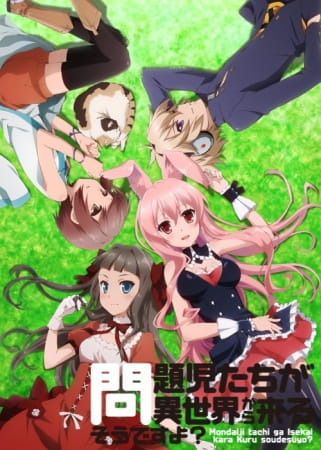
Three kids, each with a different special ability, are whisked away to a world called Little Garden. They are called upon by Kurousagi (Black Rabbit in the English dub) to win “Gift Games” and help the community regain its former glory and resources after a demon took them away.
I’d put this under the group of “Things i probably wouldn’t have watched if not for this challenge”.
I’m not normally into isekai anime (I feel it’s been way overdone lately), but I had fun with this. I honestly didn’t like a couple of the characters at first, but then I realized it was kinda the point. They did get better, though.
Automatic props for having Josh Grelle in there voicing one of the titular problem children.
I had fun with this one overall.
Aoi Bungaku Series - completed for the task “Watch an anime with more than 16 minutes in total and tagged as Mystery, Psychological, and/or Thriller”

An anthology adapting several classic Japanese books and stories.
This anime was different than a lot of what I have watched before. Bleak as hell a lot of the time (especially in the first story), but I found this anime interesting. I might try and read the books that these stories were based on.
The Irresponsible Captain Tylor - completed for the task “Watch an anime suggested by Myanimelist or Anime+”

Justy Ueki Tylor is a bit of a lazy bum. He signs up to join the space military because he wants to live a relatively easy life and get a good pension when he retires. Through sheer charisma and dumb luck, he helps diffuse a hostage situation, leading him to be promoted to Captain of a ship with a bad reputation. An evil space empire and higher-ups looking to get rid of Tylor are also involved.
I found this show funny, but I also feel like this is one you need to be in the mood for. That being said, this was a fun watch.
A lot of zany hijinks and watching Tylor get by through sheer luck and charisma. Gave me some mixed feelings at times.
I have a weakness for things that came out in the 90s, as I grew up with that animation style and shows from that time period. As such, it was very cool to hear voice actors from my childhood, like Rachel Lillis and Lisa Ortiz, in this anime. (I was internally going “OMG it’s Misty!!” every time Yuriko talked.)
Favorites from the Challenge:
Hanayamata - completed for the task “Watch an anime that began airing between 2010 and 2015″
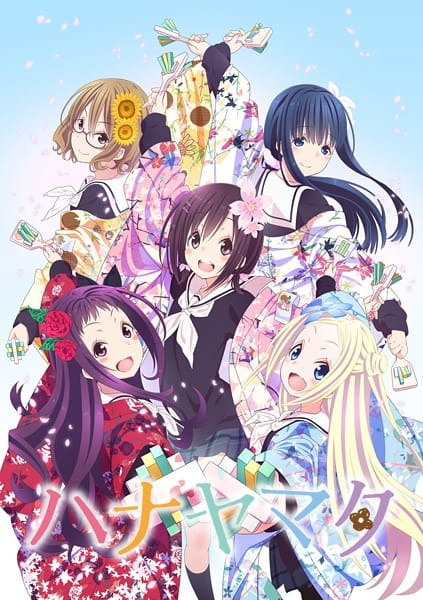
An ordinary student, Naru, wants nothing more than to be pretty and dazzling like in her fairy tale books. One day, she meets a mysterious girl, Hana, who dances with her one night. Hana turns out to be an American transfer student who ends up transferring into Naru’s class. Hana then introduces Naru to Yosakoi dancing and forms the Yosakoi club.
I thought this was a cute and fun slice-of-life anime. Premise can be a bit iffy if you really think about it, but I had fun with this show. I love how everyone slowly opened up with each other and was able to make their club work.
Also, I couldn’t help but have this thought: I feel like the first couple episodes had so much lesbian subtext that I had to check if this anime was made by KyoAni (it wasn’t, it’s made by Madhouse).
Tatami Galaxy - completed for the task “Watch a Noitamina anime”

A third-year college student runs into a mysterious guy at a ramen shop. The student reflects on his past 2 years at college, mostly spent with his friend Ozu trying to break up happy couples. The student wonders if he’s wasted his life and resolves to do better. Then a time loop starts happening and more chances arrive.
*clasps hands like Gendo Ikari*
We meet again, Masaki Yuasa.
No better time than this challenge to work through more of Masaki Yuasa’s filmography, especially after watching the decent Mind Game and the excellent Kaiba for last year’s challenge.
While watching this anime, I felt myself going back and forth on whether or not I really liked this anime. Whether it was overrated or underrated. Whether it was a good idea on what the Endless 8 could have been or something that kept going unnecessarily long because the Student couldn’t see what was in front of his face. Whether it was style over substance.
The answer?
Yes.
I honestly liked it, but I do understand the criticism. I feel like the confusion about my feelings can be a good thing and this anime still had some great points and made me think.
I also thought the art style and soundtrack were great, as usual from Masaki Yuasa.
One Outs - completed for the task “Watch an active staff member’s favorite anime with 10 episodes or more”
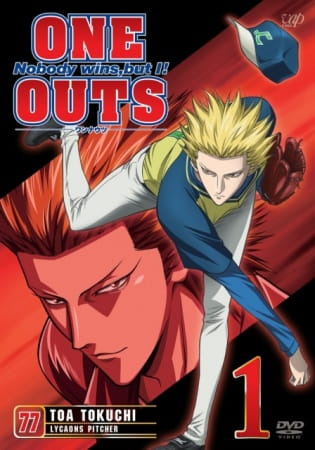
A struggling baseball team recruits Tokuchi Towa, a pitcher who is more of a gambler than anything. Kojima, the team’s veteran player, hopes that Tokuchi will lead them to the championship. Corrupt ownership and unethical opponents also add problems.
Tokuchi was a great character. He’s a genius, but also a huge troll. His method is basically trying to psychologically get to the other players and go from there. I liked seeing him work through situations and outsmart people. This was one of the few anime from the challenge where I could watch several episodes in one sitting and not even realize it.
Basically, this was a take on sports anime I didn’t know I needed.
Aggressive Retsuko (aka Aggretsuko) - Season 1 completed for the task “Watch an ONA,” Season 2 completed for the task “Watch an anime with more than 16 minutes in total and a popularity lower than #700″

Retsuko, a red panda, is an average office worker. Unfortunately, she hates her job. She is harassed by her boss and given unreasonable amounts of work. To relieve the stress from her life, she secretly goes to karaoke and sings death metal to scream everything out.
I love this. I love Retsuko. I love the little songs sprinkled in. I love Retsuko’s relationships with several of her office-mates.
I feel like I can relate so hard. Not necessarily with the heavy work load, but just the general stresses of life in your 20s. Being stuck in a job that isn’t the best, and also liking metal.
I had a ton of fun with this show. Season 1 was slightly better than Season 2, but I loved this show all the same.
Girls’ Last Tour - completed for the task “Watch an anime that finished airing with more than 10 episodes and has a synopsis by MAL Rewrite”

In a post-apocalyptic, war-torn landscape, two girls, Chito and Yuri, travel the world for answers, with only their motorbike/tank, their supplies, and each other.
This, by far, wins Best of the Challenge this year.
This anime gave me a mix of emotions that I don’t know if I’ve ever felt before. A strange mix of existential dread and sadness and going “aww” at the slice-of-life adventures the two girls have. It made me laugh, made me cry, and made me think.
Watch this one, please.
#anime#myanimelist#myanimelist.net#millennium actress#my neighbor totoro#tonari no totoro#problem children are coming from another world aren’t they?#mondaiji tachi ga isekai kara kuru sou desu yo#aoi bungaku#aoi bungaku series#irresponsible captain tylor#the irresponsible captain tylor#hanayamata#Tatami Galaxy#one outs#aggretsuko#aggressive retsuko#girls last tour#Shoujo Shuumatsu Ryokou
2 notes
·
View notes
Text


The boyfies 🤠✨✨
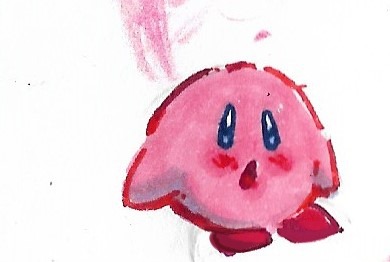
(and have a little Kirby too 🤲🏻💕)
#lennya was here#lennya draws#quick doodle#pen sketch#simple coloring#clone baby#okabe jotaro#ozu satoshi#kirby
3 notes
·
View notes
Note
Do you have any Japanese/Korean directors to recommend?
hello anon, this isn’t necessarily my area of expertise but i’ll do my best for you!
of the old masters of japanese cinema, i’m most partial to kenji mizoguchi and yasujirō ozu, unsurprisingly. (i’ve never been taken much by samurai or yakuza films, so you’ll see all i’m about to say reflects that…) the new wave films by koreyoshi kurahara, kon ichikawa, and certainly kaneto shindo are must-sees; i also like the careful hand of shūji terayama, who applies his more fantastical and surreal ideas with great nuance. as for more contemporary filmmakers, hirokazu kore-eda is near the top of the list, especially in terms of relevancy, takeshi kitano’s autobiographical trilogy is really impressive, zhang yimou’s drama films from the 1990s–2000s (e.g. rise of the red lantern, to live, not one less, riding alone for thousands of miles), jun ichikawa, kenzō masaoka, isao takahata, satoshi kon, and, of course, bae hayao miyazaki — but does that even need saying? i’d also like to see more from yoshishige yoshida, nobuhiro yamashita, shunji iwai, yuki tanada, and toshiaski toyoda (i really enjoyed his film hanging garden but i’m not sure he ever made another domestic drama); i loved makoto shinkai’s children who chase lost voices from deep below but i haven’t really liked anything before or since…
korean cinema can be tough for me because i don’t favour most gangster films, monster movies, (psychological) horror — but korea does make some fucking good films so we can get into that, even if briefly. i’d start with han hyung-mo, certainly jung jin-woo, and im kwon-taek (i’ve only seen his more recent films but he’s been directing since the 60s), and yu hyun-mok’s 60s films (e.g. an empty dream and guests who arrived on the last train). i’m not crazy about shin sang-ok but his life was fucking insane so it’s worth learning about, and i’m equally non-plussed over kim ki-duk as he’s committed to the misguided but i would be amiss not to demand you see spring, summer, fall, winter… and spring (i also enjoyed, for what it’s worth, the visions behind the isle and pietà). i’ve liked some of the 90s films of park chul-soo (oseam and 301, 302) and i would certainly watch more. the early films of kwak jae-yong, lee chang-dong has made some really affecting tragedies (burning is meh but go back to peppermint candy, secret sunshine, a brand new life, poetry), ryu jang-ha, lee kwang-kuk, and i’d like to see more by jeong jae-eun (take care of my cat is fantastic). despite thinking he’s a little ~too~ prolific, i’m also a huge sucker for hong sang-soo #onbrand
sorry this is so long i have a genetic condition that precludes me from being even mildly concise
48 notes
·
View notes
Text
Why Millennium Actress remains one of cinema’s greatest love letters
Of the numerous indelible works Satoshi Kon made throughout his career, Millennium Actress might be the only one that looks to our past. Following his 1997 debut feature Perfect Blue, the Japanese animator and manga creator began to make predictions about the changing relationship between people and media in the fledgling digital age – his third film, Tokyo Godfathers, looked at those who fell through the cracks in contemporary Tokyo, and this theme carried through to his TV series Paranoia Agent and final film Paprika, too.
Millennium Actress was Kon’s follow up Perfect Blue. Just as both films lie on opposite sides of the line between the 20th and 21st centuries, their construction and themes mirror one another. While Perfect Blue is more empathetic than cynical, it reflects the grim potential of the internet in its subjective psychological horror. Though tinged with melancholy and tragedy, Millennium Actress uses cinema history to turn the reality-bending drama of Perfect Blue into something more gentle and romantic, finding the beauty in that thin divide between media and the self, rather than encroaching horror.
The set-up is simple enough: a documentarian named Genya Tachibana is looking to interview the reclusive actress Chiyoko (who appears as an amalgamation of Setsuko Hara and Hideaki Takemine), the former star of a studio whose original lot is being demolished at the film’s opening. Once they begin the interview, the film leaps back in time to Chiyoko’s childhood, telling of the beginning of her acting career and her search for an illusive man whom she sheltered from the government.
It would be a fairly straightforward premise if not for the fact that in the recounting of her story, Genya and his cameraman appear conspicuously within Chiyoko’s memories as if they were there, filming and interfering. Furthermore, as they witness the beginning of her acting career the line between Chiyoko’s performances and her real life blurs until it’s hard to tell which is which.

Kon and co-writer Sadayaki Murai convey the emotional reality of her life through a restaging of 20th century Japanese cinema. The crew follows Chiyoko across different time periods (and genres) in scenes referencing Gojira and Zatoichi, a set that combines Akira Kurosawa’s Shakespearean epics Ran and Throne of Blood, and a confrontation between Chiyoko and her mother which echos Yasujirō Ozu’s Tokyo Story. Each new homage corresponds to a relationship in the real world.
Among its gorgeous and ever-changing background art, Takeshi Honda’s subtle and realistic character design helps to ground the fantastical plot, while Susumu Hirasawa’s bouncy electronic score reminds us that we are always standing outside of the various time periods which the characters jump between. (As for this new release, All The Anime’s restoration is pristine; the colours pop and the drawings are sharper than ever, without sacrificing the original texture.)
Cinema acting as a love letter to itself is hardly a novel idea, but outside of Kon’s own filmography there is nothing quite like Millennium Actress. The director masterfully uses the malleability of animation to find new beauty in even the most well-trodden ground. Kon paints film as almost spiritual in the way it prolongs life, and although the format itself is also perishable, Chiyoko’s life and memory stretch from one millennium to the next.
Millennium Actress is available now via All The Anime.
youtube
The post Why Millennium Actress remains one of cinema’s greatest love letters appeared first on Little White Lies.
source https://lwlies.com/articles/millennium-actress-satoshi-kon-cinema-love-letter/
0 notes
Text

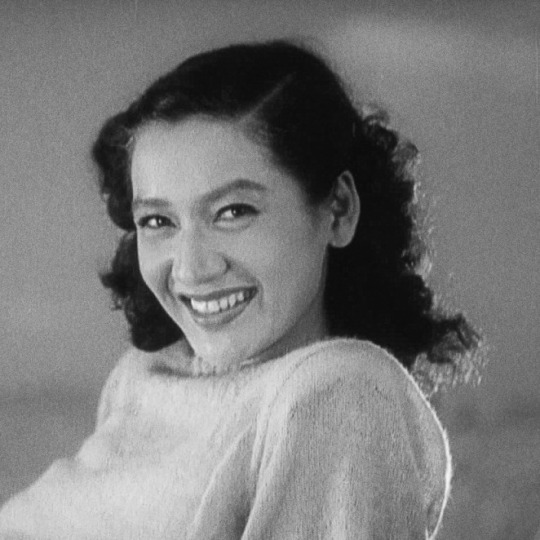
Propaganda
Kathryn Grayson (Anchors Aweigh, Kiss Me Kate)— Gorgeous brunette whose singing voice was one of the best. Could've been an opera star.
Setsuko Hara (Tokyo Story, Late Spring, The Idiot)— "'The only time I saw Susan Sontag cry,' a writer once told me, his voice hushed, 'was at a screening of a Setsuko film.' What Setsuko had wasn’t glamour—she was just too sensible for that—it was glow, one that ebbed away and left you concerned, involved. You got the sense that this glow, like that of dawn, couldn’t be bought. But her smiles were human and held minute-long acts, ones with important intermissions. When she looked away, she absented herself; you felt that she’d dimmed a fire and clapped a lid on something about to spill. Over the last decade, whenever anyone brought up her lips—'Setsuko’s eternal smile,' critics said, that day we learned that she’d died—I thought instead of the thing she made us feel when she let it fall." - Moeko Fujii
This is round 1 of the tournament. All other polls in this bracket can be found here. Please reblog with further support of your beloved hot sexy vintage woman.
[additional propaganda submitted under the cut.]
Setsuko Hara:

One of the best Japanese actresses of all time; a symbol of the golden era of Japanese cinema of the 1950s After seeing a Setsuko Hara film, the novelist Shūsaku Endō wrote: "We would sigh or let out a great breath from the depths of our hearts, for what we felt was precisely this: Can it be possible that there is such a woman in this world?"
One of the greatest Japanese actresses of all time!! Best known for acting in many of Yasujiro Ozu's films of the 40s and 50s. Also she has a stunning smile and beautiful charm!
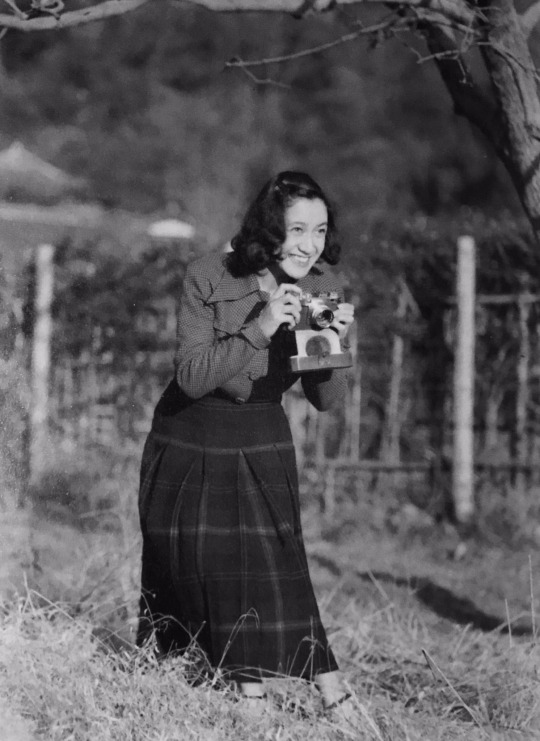
Linked gifset
Linked gifset 2
She's considered by some to be the greatest Japanese actress of all time! In Kurosawa's The Idiot she haunts the screen, and TOTALLY steals the show from Mifune every time she appears.
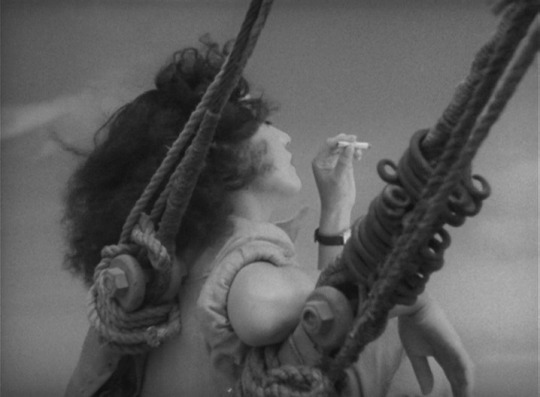
"No other actor has ever mastered the art of the smile to the same extent as Setsuko Hara (1920–2015), a celebrated star and highly regarded idol who was one of the outstanding actors of 40s and 50s Japanese cinema. Her radiant smile floods whole scenes and at times cautiously undermines the expectations made of her in coy, ironic fashion. Yet her smile's impressive range also encompasses its darker shades: Hara's delicate, dignified, melancholy smile with which she responds to disappointments, papers over the emotions churning under the surface, and flanks life's sobering realizations. Her smiles don't just function as a condensed version of her ever-precise, expressive, yet understated acting ability, they also allow the very essence of the films they appear in to shine through for a brief moment, often studies of the everyday, post-war dramas which revolve around the break-up of family structures or the failure of marriages. Her performances tread a fine line between social expectation and personal desire in post-war Japan, as Hara attempts to lay claim to the autonomy of the female characters she plays – frequently with a smile." [link]
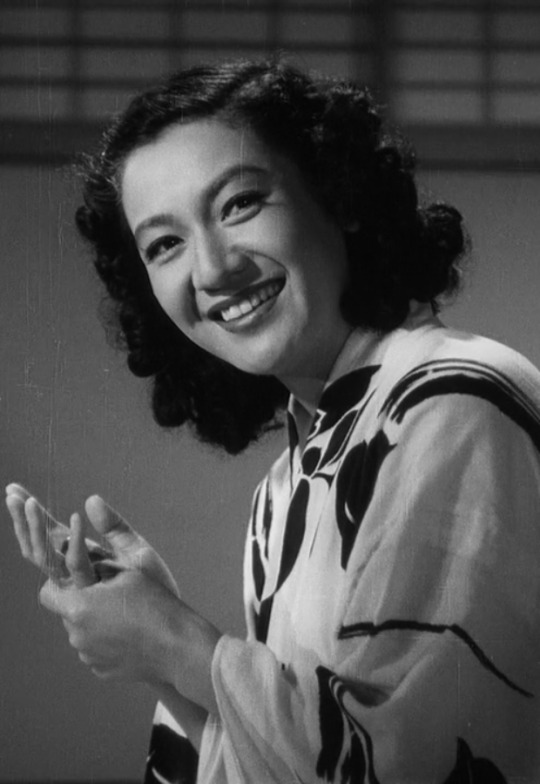
Leading lady of classic Japanese cinema with a million dollar smile
Maybe the most iconic Japanese actress ever? She rose to fame making films with Yasujiro Ozu, becoming one of the most well-known and beloved actresses in Japan, working from the 30s through the 60s in over 100 hundred. She is still considered one of the greatest Japanese actresses ever, and in my opinion, just one of the greatest actresses of all time. And she was HOT! Satoshi Kon's film Millennium Actress was largely based on her life and her career.
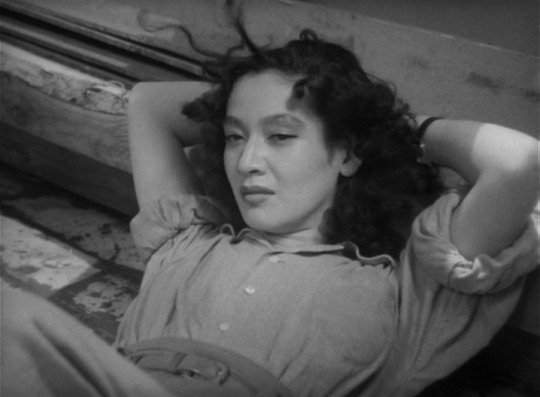
275 notes
·
View notes
Note
i feel like we always ask you about books so today i wanna ask you some anime recs :)
HOW INTERESTING THAT YOU SHOULD COME TO ME NOW, JUST AFTER I FINISHED ATTEMPTING TO BRIBE A TWITTER MUTUAL WITH A PHYSICAL CAKE SO THAT SHE WOULD WATCH AN ANIME I LOVE. i am always happy to share anime recs.
ping pong: the animation (dir. masaaki yuasa): effusive yutaka “peco” hoshino and reserved makoto “smile” tsukimoto have been best friends since day one, and both of them love to play ping pong. peco, a child prodigy at the sport, loves it with all of his soul, and is so confident in his own talent that he’s become arrogant; while smile, in spite of his natural talent, does not take ping pong seriously, seeing it as nothing more than a way to pass the time. things are shaken up for the boys by the arrival of wenge “china” kong, a chinese player sent to redeem himself in japan after being kicked off the national team, who skunks peco in their first match, sending him spiraling into crisis; meanwhile, smile catches the interest of the school’s coach, a former star player, who is determined to make sure smile does not waste his talent. also joining the cast are manabu “akuma” sakuma, peco’s belligerent rival since childhood, and ryuichi “dragon” kazama, vanguard of the elite ping pong team at kaio academy. when all is said and done, will smile and peco’s friendship—and the love of ping pong that bonds them—remain? i urge everyone to watch this anime; it is perhaps the best i’ve ever seen. a work of art, of joy, of sadness and failure and triumph—a tribute to being alive, and to what it means to love something so much you feel like there’s no point in being alive if you can’t do it. and the animation, voice acting, and score are outstanding! 11 episodes.
the tatami galaxy (dir. masaaki yuasa): an unnamed college student is perpetually dissatisfied with his life, bemoaning the fact that he can never seem to grasp that “rose-colored campus life” he was certain he would have upon attending college in kyoto. just about the only thing he has in his corner is his mischievous frenemy, ozu, who drags him into scheme after scheme that only seem to make his situation worse; and a fellow student, akashi, who the protagonist has feelings for, but can never quite seem to spit it out. after a bad break-up sends him over the edge into total cynicism, he starts to wonder if his college years would have been spent differently (i.e., better) if he had chosen to join a different club on his first day. unbeknownst to him, the desire to go back and do it over again does send him back in time—each episode is an alternate timeline based on which club he joined. no matter how things change, though, he always seems to keep running into ozu, to just miss akashi, and to get involved with a man calling himself higuchi, who claims to be a god of matrimony; a bone-headed popular senior named jougasaki; and a beautiful but intense dental hygienist named hanuki. in the protagonist’s quest for the perfect college life, however, will he miss what’s right in front of him? i really love yuasa as you can probably tell and this, just like ping pong, is beautifully animated, great fun, and unexpectedly moving. a testament to the little things, to seeing the beauty and wonder in what we have. and the opening and ending are GOD TIER. 11 episodes.
gekkan shoujo nozaki-kun (dir. mitsue yamazaki): if you somehow haven’t watched this yet, please love yourself and do it. a romantic comedy series that follows 16-year-old chiyo sakura’s attempts to woo her crush, umetarou nozaki, gsnk, contrary to the shoujo form, actually begins with her confessing to him—but he misunderstands and gives her... his autograph?! yes, it turns out nozaki moonlights as a hugely successful shoujo romance mangaka, and he’s been needing an assistant, and sakura is in the art club... convenient! this show has it all—uproarious humor, masterful comedic timing, incredibly charming characters, and just the right dose of heartfelt romance to warm any heart. other cast members include mikoto mikoshiba, nozaki’s best friend, whose flirtatious antics constantly cause him to nearly die of embarrassment; yuzuki seo, chiyo’s best friend, a brash and oblivious jock with a beautiful singing voice; hirotaka wakamatsu, a mild-mannered basketball player constantly aggrieved by seo’s bullying; yuu kashima, star of the drama club and dashing prince of the school; and masayuki hori, drama club president and kashima’s ever-frustrated director. love is in the air not just for sakura, but for a few others, as well—it’s going to be an interesting year! 12 episodes.
kids on the slope (dir. shinchiro watanabe): kaoru nishimi is a shy and depressed honor student, classically trained to play the piano, who has spent his entire life moving from town to town due to the nature of his father’s job. at the beginning of the summer of 1966, he is sent to a small coastal town in kyushu to live with relatives, and is prepared for another year of loneliness until his world is turned on its axis when he meets delinquent sentaro kawabuchi. the two develop a strange and unlikely friendship, and kaoru soon discovers that sentaro, or sen, is an avid fan of jazz, then an emergent form of music in japan, and plays the drums in the basement of a record store owned by the family of his childhood friend, ritsuko mukae, with whom kaoru immediately falls in love. when ritsuko says that she would love to hear kaoru and sen play together, kaoru begins to acquaint himself with jazz, too, and finds that it holds more magic than he expected. part classic coming-of-age drama, part love letter to the jazz genre, this series was, fun fact, directed by the man behind cowboy bebop and samurai champloo—so, like, if that isn’t a testament to its quality, i don’t know what is. it will make you cry, though. just warning you.
silver spoon (dir. tomohiko ito): desperate to escape the pressures of his home life, beleaguered honor student yuugo hachiken foresakes his chances of attending an elite tokyo high school and applies to ezonoo agricultural school in hokkaido. at first holding himself a rung above his peers, due to his perception of them as bumpkins who have never had to work hard academically due to their security as farmers, hachiken quickly learns that there’s a lot he doesn’t know, and he’ll have to work hard if he wants to keep up with his peers. though initially withdrawn, hachiken comes to make many new friends, and soon begins to take his studies seriously, earnestly trying to learn all he can about the world of agriculture and how it affects the lives of his friends. this series is easily something i’d call “the feel-good story of the decade,” but it also has many profound and emotional moments, and a hugely relatable protagonist in hachiken. it’s definitely a comedy, but at its heart, it’s one of those special series that kind of takes your hand and smiles at you and says, “yeah. i get it. i know how you feel. but it’s all right. life’s pretty fun, even if you don’t notice.”
hyouka (dir. yasehiro takemoto): to this day i’m still a bit stunned that kyoto animation managed to come out with something as good as hyouka, since it’s so different from their other works, but the truth is there. it’s simple, with a cast of only four characters and few recurring side ones; a subdued score using mostly public domain classical pieces, a quiet high school as the backdrop, a close and intimate portrait of the four kids it brings together. the PV actually does a fine job of introducing the characters—apathetic houtarou, inquisitive eru, cheerful satoshi, and caustic mayaka—so i won’t go into that too much. essentially, houtarou is urged by his sister to sign up for the classics club after no one else does, since it will be disbanded if it does not have at least one member. much to his surprise, someone else already has signed up by the time he does—a curious girl named eru with an insatiable appetite for mysteries. though houtarou lives by a philosophy of what he calls “energy conservation,” eru has a power over him (read: he has a big, beautiful crush on her) that compels him to go along with her antics, and his penetrating intellect doesn’t help much. satoshi, houtarou’s best friend, and mayaka, a childhood... acquaintance of houtarou’s, also join the club, and hyouka chronicles all of the things that happen to them over the course of their school year. when asked about the meaning behind the title (”hyouka” means “frozen dessert”), the author of the novels said, “the colour of youth is like ice cream. its many flavours are like the spectrum of a rainbow, but no matter how it tastes, what doesn’t change is its richness and flavour. another distinguishing feature of ice cream is the short time one has to eat it, and how we must take care to avoid polluting it. it’s just like how youth is full of numerous possibilities, but its fragile and limited energy is easily challenged by the outside world.” i think that probably speaks for itself in alluding to the bittersweet tone of the series. it really is one of my favorites.
and, because my fingers are getting tired: yu yu hakusho is my favorite shounen series by a mile and one of the few for which i highly recommend the dub—it’s long though, 100+ episodes, but worth every minute. i’ll be glad to go into why yyh specifically is the best in a separate post if anyone is interested bc hoo boy. uchouten kazoku season 1 is great and one of my favorites but season 2 was kind of eh to me. if you like action and tragic romance, kyoukai no kanata is my second-fave kyoani series after hyouka, though it does have some fanservicey bits and fetishy humor that kind of date it a little bit. and if you haven’t started boku no hero academia yet—PLEASE GET ON THAT; IT’S SO MUCH FUN!
and, of course, the anime of my heart and soul: lovely complex, a romcom about a tall girl and a short boy, and their arduous, hilarious, heart-melting journey from vitriolic best buds to lovers. hits all the right notes. no other shoujo compares. it’s a series that anyone and everyone can AND WILL enjoy.
i hope that’s enough to get you started! :’D pls let me know what you think if you watch any
31 notes
·
View notes
Photo


‘Late Spring’, Yasujiro Ozu (1949)
‘Millennium Actress’, Satoshi Kon (2001)
143 notes
·
View notes
Photo

クローンベイビー (Clone Baby)
Dorama Details
Title: クローンベイビー
Title (english): Clone Baby
Broadcast Network: TBS
Genre: Science Fiction / Thriller
Episodes: 11
Release Date: October 8 - December 17, 2010
Runtime: Friday 24:20
TV Ratings: 2.2%
Theme song: Stay by HURTS
Plot
Cloned human beings who have same DNA compete each other to get one chair. No matter how far they are away, the cloned persons can attract each other. If they meet they try to kill each other. These clones with same the DNA are born to fight.
Cast
Ichikawa Tomohiro as Masamune Aoyagi
Matsuzaka Tori as Hiro Kikuchi
Fujimoto Kanata as young Kikuchi
Taki Yukari as Marika
Yamazaki Kento as Okabe Jyotaro (Okajo/Jotaro)
Kikuta Daisuke as Mikumo Futoshi
Inaba Yu as Satoshi Ozu
Kikuchi Akiko as Higuchi
Miki Honoka as Kanako Aoyagi
Suruga Taro as Haruki Wakabayashi
Sakurada Dori as Eita Tsubaki
Makita Tetsuya as Shyogo Katsushika
Shiga Kotaro as Shoichirou Hazuki
Matsushige Yutaka as Kazuma Aoyagi
Fujimoto Kanata as young Kikuchi
Kabe Amon as young Futoshi
Production STAFF
Director: Kawashima Ryutaro, Okamoto Shingo (岡本伸吾), Yuasa Noriko (湯浅典子)
Screenwriter: Nakayama Tomohiro (中山智博), Miyuki Nodaka (野高みゆき), Ikeda Natsuko (池田奈津子), Obayashi Rieko (大林利江子)
Producer: Iyoda Hidenori, Sugiyama Tsuyoshi, Kawashima Ryutaro, Sato Atsushi
Music: Nakanishi Kyo
WEBSITE
Official Homepage:
www.tbs.co.jp/clone-baby
source : AsianWiki + DramaWiki
SPOILER
Yamazaki Kento played the role as a God of Hacker. He's currently attracted & followed a murder case. He then met the real murderer & found out that he's a clone baby. What would he do next? Find the full story by download or stream here:
[DOWNLOAD LINK]
RAW
SUBTITLES
STREAM (with engsub)
*ALT = alternative
3 notes
·
View notes
Text
El cine japonés
El cine de Japón (日本映画; Nihon-Eiga) tiene una historia que abarca más de 100 años.
El arte japonés fue una gran influenciador del cine japonés, siendo así que los directores japoneses toman la idea del haiku, como arte poético que narra con imágenes, para inspirarse y hacer la yuxtaposición de tomas en películas mudas que se producirían hasta 1930 (siendo ejemplo Kenji Mizoguchi y Yasujirō Ozu), dándole al cine japonés este rasgo distintivo que serviría como indentidad propia. La estructura narrativa del haiku es fundamental para entender los el cine japonés.
Una vez definida esta base, la escuela cinematográfica de este país se enfocó en dos temáticas: el realismo y la fantasía.
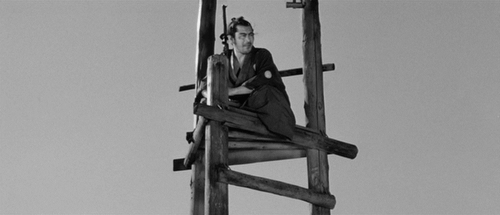
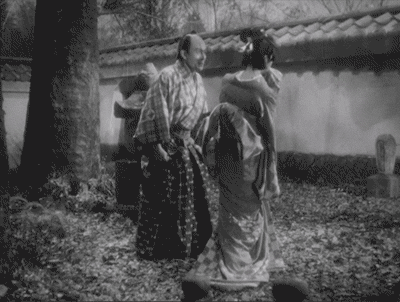
El cine samurái
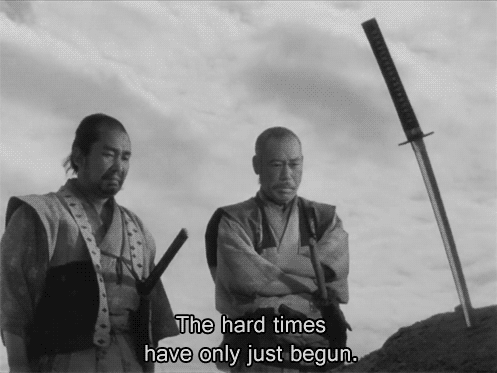
El cine de samuráis era un género equivalente al western en Hollywood: duelos en los que en lugar de pistolas se utilizaban katanas, el honor como vehículo de la trama, la venganza para estructurar el drama y códigos de vestimenta singulares, entre otros.
El cine samurái fue encabezado por Akira Kurosawa. Sus mejores películas de este género podrían ser Yojimbo (1961) y Sanjuro (1962).

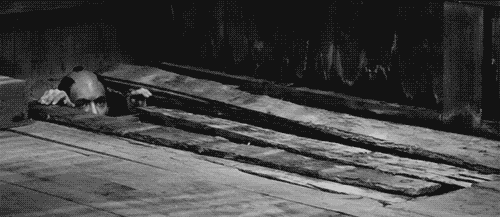
Akira Kurosawa
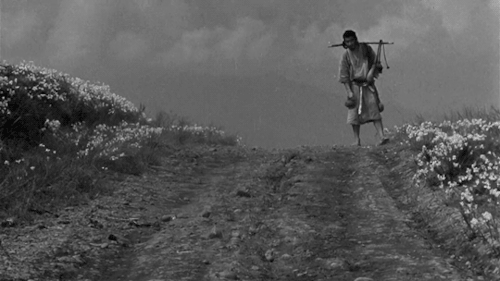
Kurosawa fue precursor de múltiples estilos cinematográficos, y su obra influyó también en blockbusters como La guerra de las galaxias (George Lucas, 1977). Algunas de sus grandes obras refieren a tragedias adaptadas de Shakespeare, como Trono de sangre (1957) y Ran (1985), aunque sus filmes más intimistas, como Ikiru (1952) y Dersu Uzala (1975), hablan de los tratados existenciales.
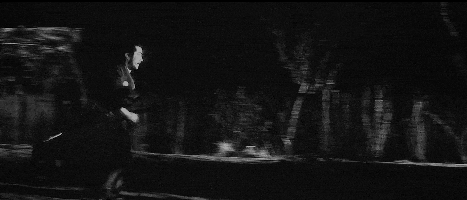
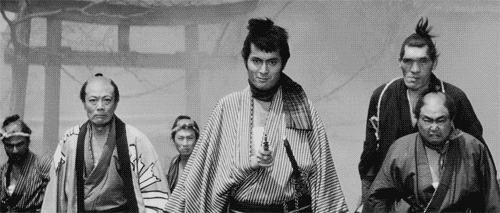
Shohei Imamura
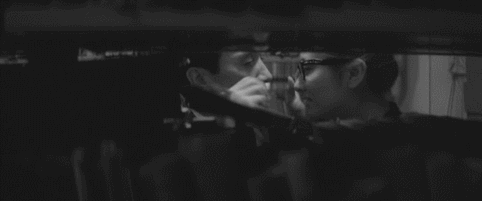
Destacado miembro de la nueva ola japonesa, este director representa la contraparte de Kurosawa, cuestionando el humanismo per se. Imamura retrata cómo el sistema económico transformaba al espíritu en Japón, con cintas como Los pornógrafos (1966), La balada de Narayama (1983), Lluvia negra (1989) y La anguila (1997).
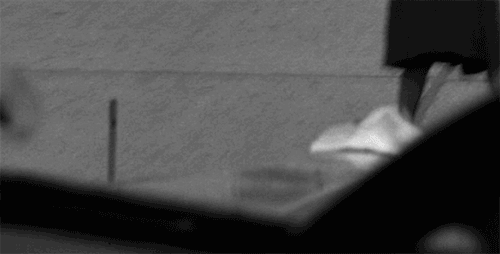
Yasujiro Ozu
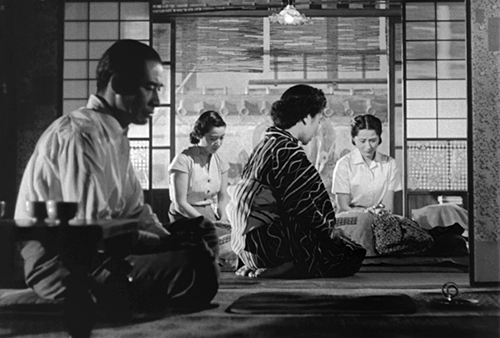
Ozu contaba historias sobre la clase media japonesa de posguerra. Con varias obras maestras, la mejor de ellas es La historia de Tokio (1953) que simplemente describe la manera como una pareja de viejos viaja a Tokio para visitar a sus hijos y descubrir que estos no tienen tiempo para dedicarles. El cine de Ozu siempre busca la lección moral con respeto, sin llegar a ser cursi.
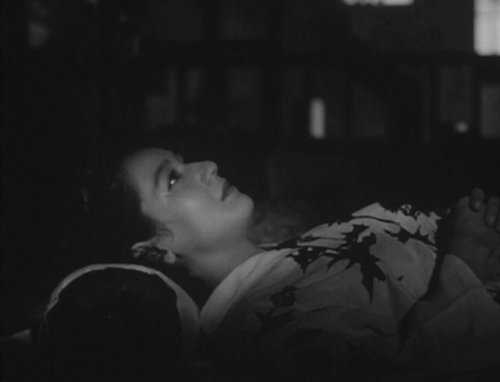
Cine vs la guerra
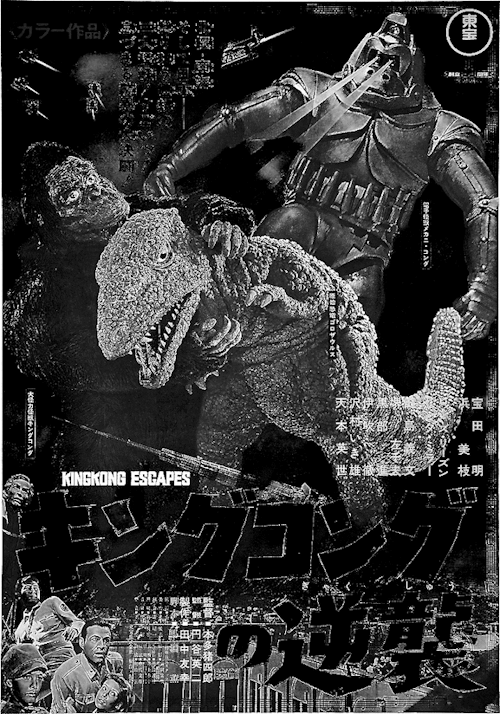
Dentro del cine japonés los dramas antibélicos también fueron de gran relevancia, particularmente los de Kon Ichikawa, siendo estos últimos potentes relatos socialmente responsables que crearon secuelas, por ejemplo El arpa birmana (1956). Sin estás cintas no habrían existido clásicos contemporáneos como La delgada línea roja (Terrence Malick, 1998) ó Cartas de Iwo Jima (Clint Eastwood, 2006). Sobre el cine antibélico japonés podemos hablar de la tendencia antinuclear, del cine de criaturas, comandada por Ishirō Honda y su contundente creación, el monstruo Godzilla, en 1954.
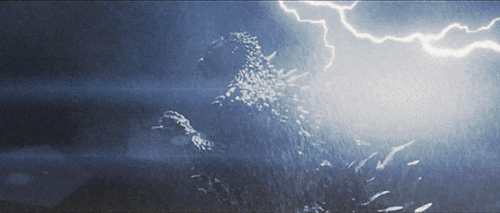
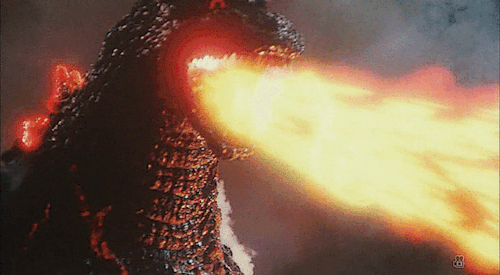
Otro género que existió en esta cinematografía desde finales de los 50 es el cine yakuza. Este correspondía al cine de gangsters de Hollywood; este género mostraba las costumbres de la mafia japonesa, un fenómeno cultural que tiene inspiración en la tradición samurái y sus códigos de honor. Con el paso del tiempo el cine yakuza terminaría siendo de carácter hiperviolento, con directores como Takashi Miike con cintas como Gozu (2003).
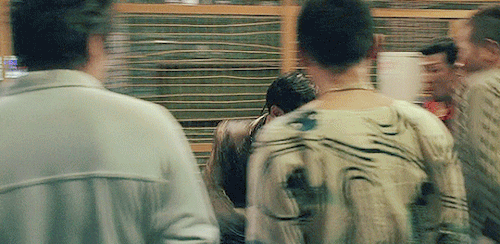
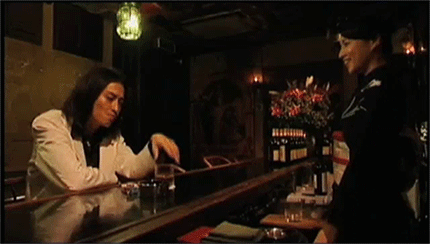
Seijun Susuki
Este cineasta se enfocó en el género yakuza y fue influencia de célebres directores, entre ellos Tarantino. Suzuki creó películas absurdas, a un frenético ritmo bebop, muy en deuda con el jazz, y empleaba los elementos de las cintas de yakuzas para hablar de la existencia humana.
Cine surrealista y de terror
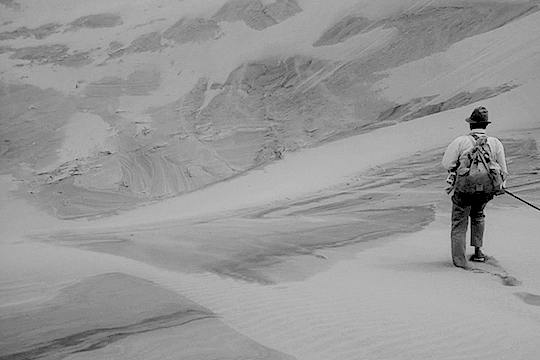

Hiroshi Teshigahara (1927-2001) es un director que mejor representa la propuesta del cine surrealista japonés. Cintas como La mujer de las dunas (1964) o Rostro ajeno (1966) exploran metafóricamente la oscura naturaleza del hombre. Otras películas que destacan en este género son la hermosa Kwaidan (Kobayashi, 1964) y Kuroneko (Kaneto Shindō, 1968).
Posteriormente, el director Nobuhiko Obayashi creó una nueva forma de hacer cine, combinando el arte pop con el cine de terror (de él destaca House, estrenada en 1977, que fue la cinta que detona este género de películas pop/terrror). Por otro lado, Hideo Nakata, con El aro (1998), influyó en la forma de hacer cine de terror contemporáneo, y junto con Ju-on (2000-2003), de Takashi Shimizu, pusieron a Japón en el mapa del cine comercial.
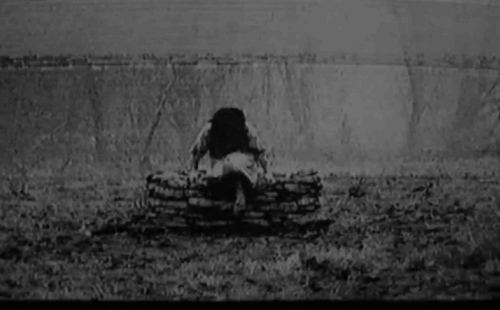
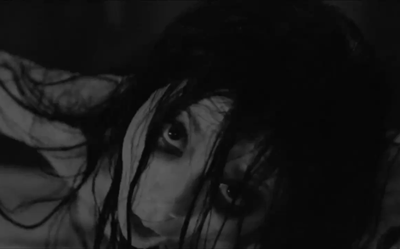
Ultraviolentos
Pronto aparecieron estilos en el cine japonés ultraviolentos debido a la notable insensibilización del público. Carentes de historia en muchos casos, estas películas sólo buscaban sembrar praderas de sangre. Aquí también surgieron directores destacados, como Miike (Audition) y Sion Sono (El club del suicidio).
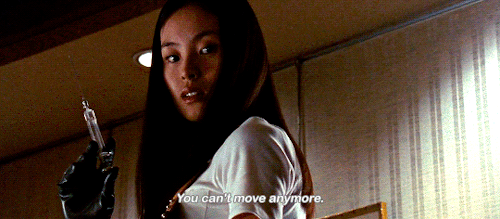
La animación

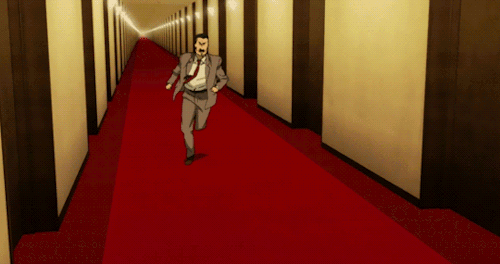
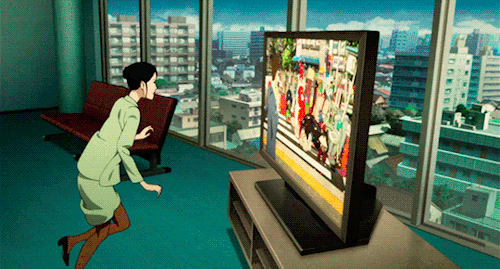
La animación japonesa es uno de los géneros más representativos del cine japonés. Uno de los más grandes exponentes de este género es Hayao Miyazaki, cuya obra destaca por resaltar los valores humanos con base en una técnica excepcional que conecta con el público a nivel estético. Cintas imperdibles son La princesa Mononoke (1997) o El viaje de Chihiro (2001). Un par de autores más para tomarse en cuenta: Kastsuhiro Ōtomo (Akira) y Satoshi Kon (Paprika).
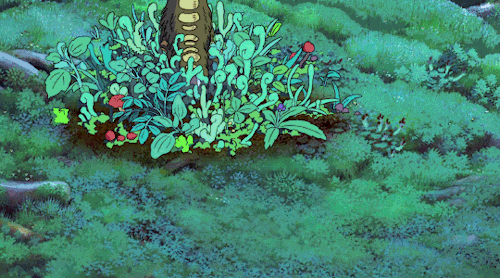
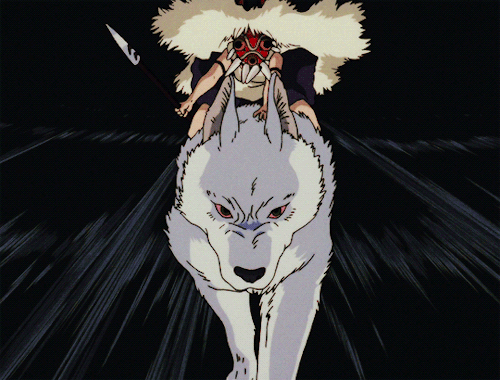
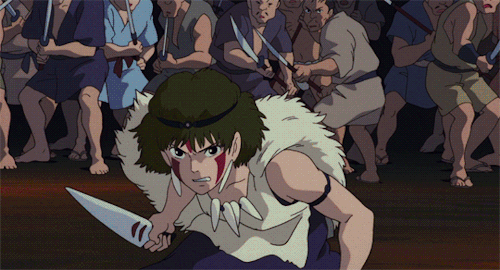
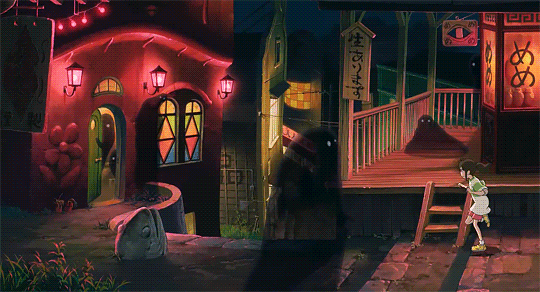

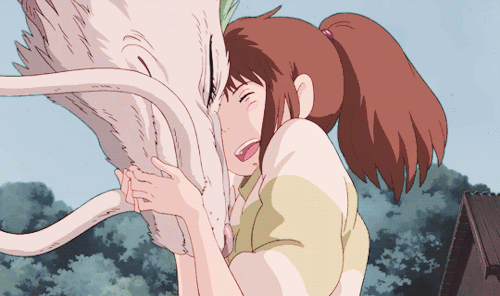
Panorama actual
Actualmente, Naomi Kawase (El bosque de luto, 2007) es una cineasta que ha tenido mucho auge en Japón; iniciada en el documental, emplea el acercamiento a lo real para esbozar haikus emocionales. Por otro lado, el director Hirokazu Kore Eda (De tal padre tal hijo, 2013) se ha convertido en uno de los más reconocidos de Japón. Con emotivos retratos de las relaciones humanas en la insensible era posindustrial, ambos directores detonan emociones potentes en el espectador con recursos modestos, denotando que el haiku sigue más presente que nunca en el corazón del cine japonés.

1 note
·
View note